AIDA MULUNEH STUDIO x WINDSOR GALLERY
PRESENTS
World Collection
Bringing the world to Africa and taking Africa to the world through photography.
February 12 – March 26, 2023
Abidjan, Côte d’Ivoire
©Rory Doyle
I planted the roots of Africa Foto Fair in Addis Ababa, Ethiopia in 2010. The main objective of that first biannual festival—then known as Addis Foto Fest—was to develop talent from within the country and across Africa. We engaged the international photography market to offer education, exhibitions, and exchange through images.
After a brief hiatus due to the pandemic, we are launching the Africa Foto Fair as an extension of the same mission that I started twelve years ago—with an even broader mission. By launching the Africa Foto Fair in Abidjan, Côte d’Ivoire, our objective is to bridge an exchange between East and West Africa. Having had the opportunity to work with photographers in Senegal, Mali, South Africa, and the United States of America, I encountered barriers in language, culture and perception that has obscured our view of the creative richness of Africa. It was important for me not to only develop another cultural event in the West African landscape, but to also establish an online publication to extend the physical event into a global audience, and to continue the conversation unconstrained by physical or cultural boundaries. This online publication bridges the shifting global markets and emerging photography talents from Africa and beyond.
One of the fair’s key elements is the establishment in Abidjan of the photography printing facility “Africa Print House.” I and many photographers on the continent struggle to access international standardized printing facilities, which are often limited to only a few regions in Africa. Thus, it was just as important to provide printing services to professional photographers while also utilizing the online platform as a space to offer print sales. This also gives the global audience access to emerging talents from Africa and the Global South. In essence, my priority is to set up a base to address the core elements: education, exhibition opportunities and services. This will shift the trajectory of photography from Africa into the international market.
Join me on this exciting journey as we navigate a new frontier in collaboration and exchange through images and creativity by taking Africa to the world and bringing the world to Africa.
Aida Muluneh
Fonder/ Director
Africa Foto Fair | Aida Muluneh Studio
I planted the roots of Africa Foto Fair in Addis Ababa, Ethiopia in 2010. The main objective of that first biannual festival—then known as Addis Foto Fest—was to develop talent from within the country and across Africa. We engaged the international photography market to offer education, exhibitions, and exchange through images.
After a brief hiatus due to the pandemic, we are launching the Africa Foto Fair as an extension of the same mission that I started twelve years ago—with an even broader mission. By launching the Africa Foto Fair in Abidjan, Côte d’Ivoire, our objective is to bridge an exchange between East and West Africa. Having had the opportunity to work with photographers in Senegal, Mali, South Africa, and the United States of America, I encountered barriers in language, culture and perception that has obscured our view of the creative richness of Africa. It was important for me not to only develop another cultural event in the West African landscape, but to also establish an online publication to extend the physical event into a global audience, and to continue the conversation unconstrained by physical or cultural boundaries. This online publication bridges the shifting global markets and emerging photography talents from Africa and beyond.
One of the fair’s key elements is the establishment in Abidjan of the photography printing facility “Africa Print House.” I and many photographers on the continent struggle to access international standardized printing facilities, which are often limited to only a few regions in Africa. Thus, it was just as important to provide printing services to professional photographers while also utilizing the online platform as a space to offer print sales. This also gives the global audience access to emerging talents from Africa and the Global South. In essence, my priority is to set up a base to address the core elements: education, exhibition opportunities and services. This will shift the trajectory of photography from Africa into the international market.
Join me on this exciting journey as we navigate a new frontier in collaboration and exchange through images and creativity by taking Africa to the world and bringing the world to Africa.
Aida Muluneh
Fonder/ Director
Africa Foto Fair | Aida Muluneh Studio
Exhibiting Photographers
Browse exhibiting photographers from the world collection.
Exhibiting Photographers
Browse exhibiting photographers from africa
ASIA
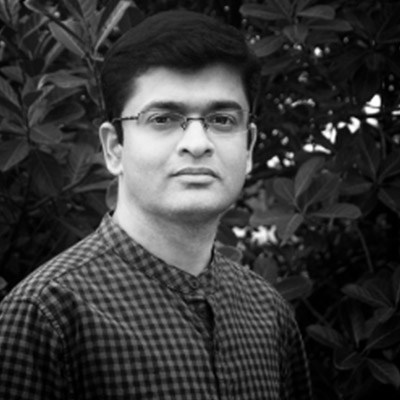
Debiprasad Mukherjee
India

Debiprasad Mukherjee
India
Debiprasad Mukherjee is an Indian photographer and visual storyteller. He is committed to leverage photography as a powerful tool to capture and record social, political and financial issues & conflicts but also to portray surreal beauty and the enduring power of the human spirit.
Mukherjee was the convener of the first Kolkata International Photography Festival, and attended the World Climate Summit in Madrid (2019) as Global Carbon Ambassador and author of “Sound of Silence”. His strong passion for documentary photography & visual journalism has allowed him to travel globally to India, Australia, Indonesia, France, Spain, China, Singapore, Thailand, U.A.E, U.K, Iraq, Qatar, Bangladesh, Nepal, Malaysia and the U.S.A among others.
His works have been exhibited in more than 20 countries and published in more than 15 international publications & websites. Mukherjee has been the recipient of many international awards & honourable mentions from 32 countries across the continents. He was a key member of the Indo-China cultural collaboration team that represented India at the Lishui Photo Festival, China.
Sound of Silence

Another world with a presence of absence remains within the sound of silence, a little world within our big planet rotating on another orbit with its own rhythm. To most it may seem insignificant yet it undeniably exists, with its own citizens, own language, own emotions, own sounds or rather its own silence too. We may lack clues about the existence of this world and hence it remains unexplored, untouched, unheard of … isolated like a sudden mute moment inside a cacophony, a piece of erased memory, a non-existent island on a map. Many children across the slums of Kolkata are suffering from hearing impairment and the trend is increasing. Genetic mutation, poor hygiene, lack of treatment, sound pollution, lack of awareness, no immunisation, and early age diseases are amongst the primary probable causes. To their parents and relatives this issue is often viewed as the curse from God, a misfortune. I visited 8 different slums of the 'City of Joy' to identify the hearing-impaired children who are fighting against all odds. Most of them are living in miserable environmental conditions either for socio-economic reasons or as a product of severe prejudice and negligence. Some of them are orphans, while some are poor and destitute, hence medical treatment remains a remote luxury. It was difficult to get the access to the privacy of their very own world in terms of physical reach and psychological intimacy. In our time together, we cracked jokes, shared our food, played cricket, exchanged our stories - all silently. I listened to their dreams, their feelings, their complaints and problems, their prides and glories, their sorrows... and sometimes even their best-kept secrets.
Sound of Silence
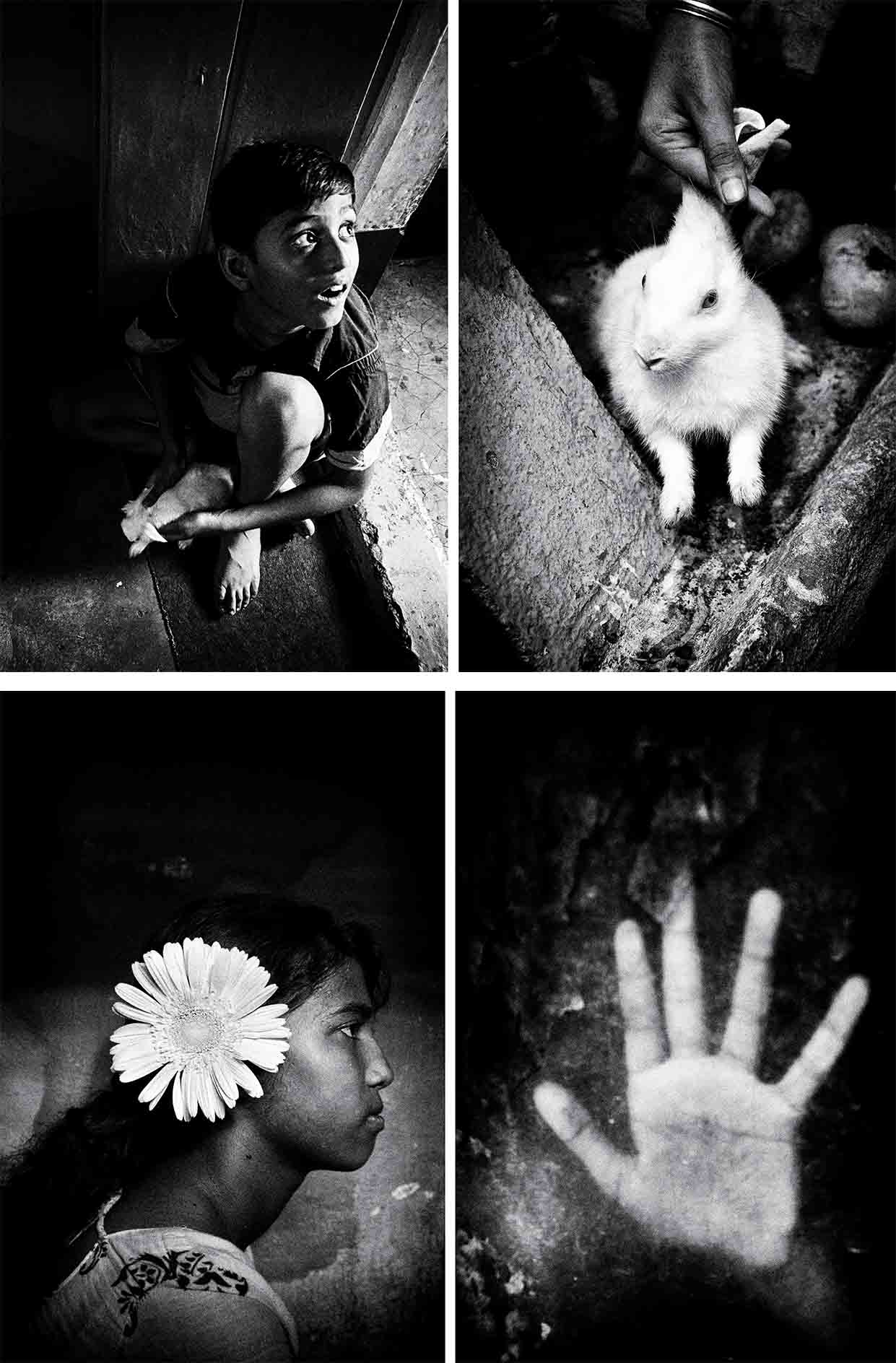
Another world with a presence of absence remains within the sound of silence, a little world within our big planet rotating on another orbit with its own rhythm. To most it may seem insignificant yet it undeniably exists, with its own citizens, own language, own emotions, own sounds or rather its own silence too. We may lack clues about the existence of this world and hence it remains unexplored, untouched, unheard of … isolated like a sudden mute moment inside a cacophony, a piece of erased memory, a non-existent island on a map. Many children across the slums of Kolkata are suffering from hearing impairment and the trend is increasing. Genetic mutation, poor hygiene, lack of treatment, sound pollution, lack of awareness, no immunisation, and early age diseases are amongst the primary probable causes. To their parents and relatives this issue is often viewed as the curse from God, a misfortune. I visited 8 different slums of the 'City of Joy' to identify the hearing-impaired children who are fighting against all odds. Most of them are living in miserable environmental conditions either for socio-economic reasons or as a product of severe prejudice and negligence. Some of them are orphans, while some are poor and destitute, hence medical treatment remains a remote luxury. It was difficult to get the access to the privacy of their very own world in terms of physical reach and psychological intimacy. In our time together, we cracked jokes, shared our food, played cricket, exchanged our stories - all silently. I listened to their dreams, their feelings, their complaints and problems, their prides and glories, their sorrows... and sometimes even their best-kept secrets.
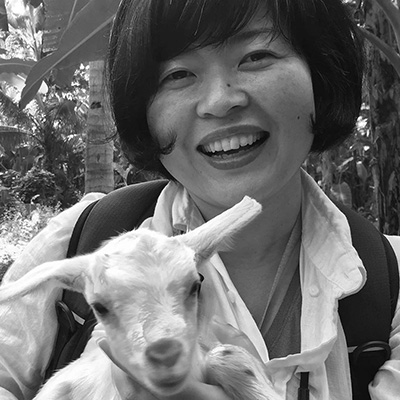
Miyuki Okuyama
Japan

Miyuki Okuyama
Japan
Miyuki Okuyama is a Japanese photographer currently living and working in the Netherlands. Her work takes a documentary, visual art, design and photo-book form.
Okuyama’s work has been exhibited internationally, including at the Singapore International Photo Festival (2020-2021), Museum Arnhem (commissioned work, 2020) , Reimagining War (Tokyo, Kyoto, 2020) and Cortona On The Move (Photo Festival in Italy, 2017).
She was the winner of Swiss Photo Three Award (2019, Lugano) and the 2nd winner of Best Portfolio Breda Photo Festival (2018). Her documentary portraits were nominated for Unyielding Gaze of Kuala Lumpur International Photo Award (2019). Her self-made and designed photo book was the winner of Cortona on the Move Photo Festival, and the festival published the editor’s edition in 2017.
Okuyama also contributed her photos with own texts to Yahoo! Japan News (2020) and The Akahata, a Japanese newspaper (Dec, 2021).
She is now studying and preparing to go to Africa for her new documentary project on working animals.
Stateless: War Displaced Filipino Japanese

From the beginning of the 20th century until the end of the Second World War in 1945, Japanese companies were running a large-scale Manila hemp industry in Mindanao, Philippines, due to the industrialisation of this area, a Japanese community was formed there. Thousands of Japanese workers moved to Mindanao and many of them were married to local women, resulting in the births of thousands of Japanese children. Before the war, the Japanese community in Mindanao enjoyed the prosperity of booming industry. There was a Japanese school, shops and even a cinema. This project portrays the Japanese descendants who were born during or right after the war, never knowing of such blessing, but had to grow up in poverty and anti-Japan sentiment. On March 10th 1945, by the landing of the US Army, the Battle of Mindanao started. Many Japanese had to collaborate with the Japanese army or had to escape to the jungles with their families. Many died in battles, were killed by the guerrillas or by the tropical disease. Many became missing. Even if they survived the war, they had to repatriate to Japan after the capitulation, leaving their wives and children behind. The Japanese children had to hide their Japanese identity when growing up in the harsh anti-Japan sentiment. Many were trapped in poverty preventing them from going to school, and did not have access to their nationality, or Japanese state assistance, as they were neither documented, nor considered Japanese. Since 2004, a Japanese aid organisation has been supporting them with searching for their Japanese families and application for Japanese nationality. Yet, many Japanese descendants still live in difficult conditions.
Stateless: War Displaced Filipino Japanese
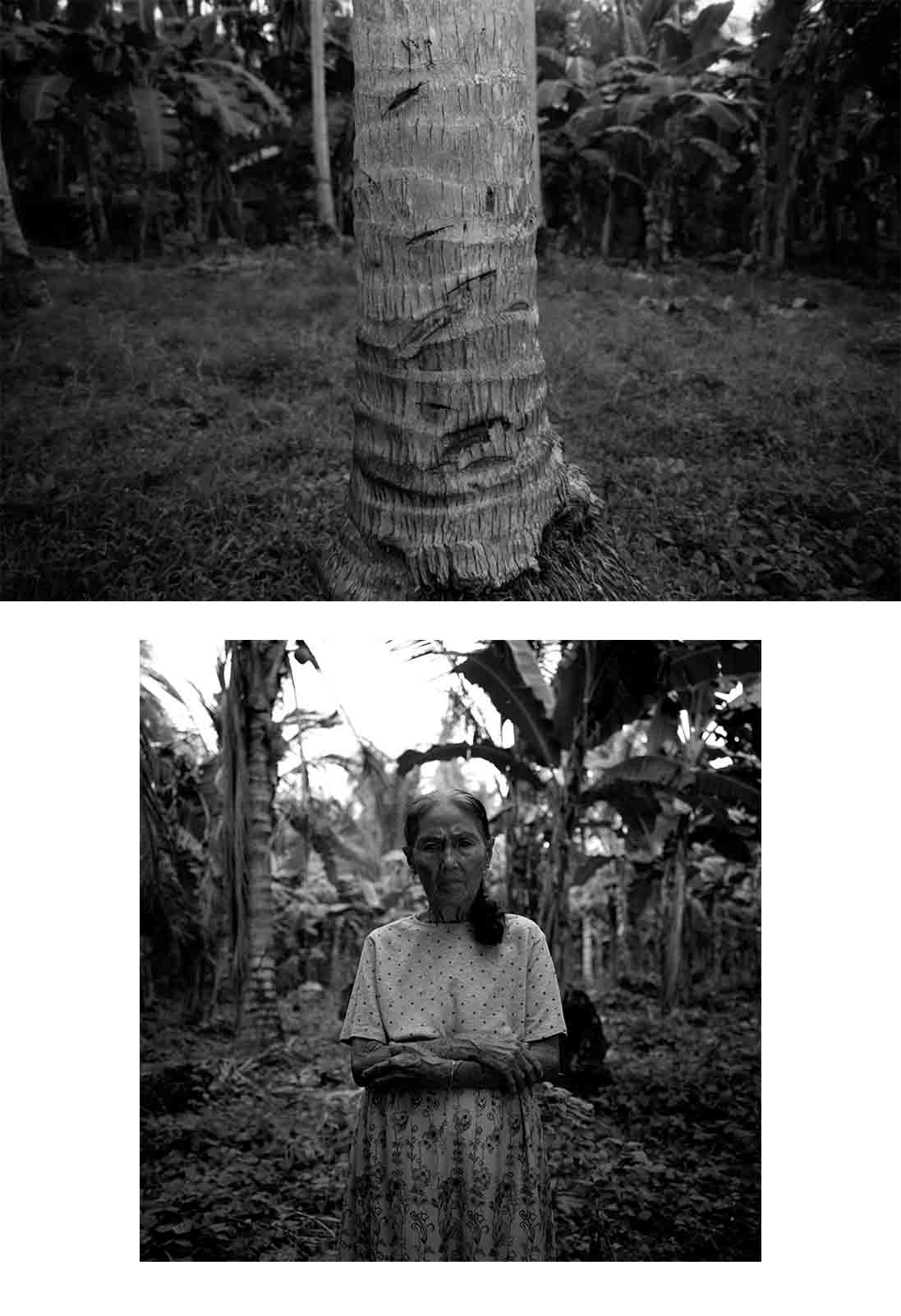
From the beginning of the 20th century until the end of the Second World War in 1945, Japanese companies were running a large-scale Manila hemp industry in Mindanao, Philippines, due to the industrialisation of this area, a Japanese community was formed there. Thousands of Japanese workers moved to Mindanao and many of them were married to local women, resulting in the births of thousands of Japanese children. Before the war, the Japanese community in Mindanao enjoyed the prosperity of booming industry. There was a Japanese school, shops and even a cinema. This project portrays the Japanese descendants who were born during or right after the war, never knowing of such blessing, but had to grow up in poverty and anti-Japan sentiment. On March 10th 1945, by the landing of the US Army, the Battle of Mindanao started. Many Japanese had to collaborate with the Japanese army or had to escape to the jungles with their families. Many died in battles, were killed by the guerrillas or by the tropical disease. Many became missing. Even if they survived the war, they had to repatriate to Japan after the capitulation, leaving their wives and children behind. The Japanese children had to hide their Japanese identity when growing up in the harsh anti-Japan sentiment. Many were trapped in poverty preventing them from going to school, and did not have access to their nationality, or Japanese state assistance, as they were neither documented, nor considered Japanese. Since 2004, a Japanese aid organisation has been supporting them with searching for their Japanese families and application for Japanese nationality. Yet, many Japanese descendants still live in difficult conditions.

Mouhamed Moustapha
India

Mouhamed Moustapha
India
Mouhamed Moustapha is an Independent Photographer from Pondicherry, India.
He grew up as part of a poor family, following a disjunctive formal education, he began to work odd jobs as a menial labourer, lorry cleaner, daily wage earner and any job he could find to make ends meet.
Slowly, he began his climb – a painstaking journey that took him through various cities and challenges. Through these difficult years, he was exposed to people from all strata of society and this gave him a unique perspective on everyday life.
In the meantime, he began feeling emptiness and a lack of purpose. Grappling with routine, stress, and depression, he was yearning to fill in the void with something more significant and real, which is when he discovered his true calling in photography. The comfort and connection he felt with it immediately allowed him to understand that this was where his passion and heart belonged.
His work has been exhibited in several venues such as Festival Photography Maribor, Maribor, Slovenia (2019), Eyes On Main Street Photo Festival, North Carolina, USA, (2018), THE EXISTENCE Solo Photography Exhibition Pondicherry (2018), Kuala Lumpur Photography Festival Malaysia (2017), Goa Affordable Art Festival Goa, India (2017), Kuala Lumpur Photography Festival Malaysia (2017). He was also the first runner up for Monovision Photography Awards, Street Photography,London,UK (2018) and his work was featured in several publications such as The Hindu Tamil New Paper, Art Dose Magazine, Puthiya Thalaimurai, Tamizh Magazine. Moustapha has also participated in many workshops and projections around the world and in India.
My tryst with LIFE and the LENS

To me, the essence of photography is a “human-nature connection”. I have found that it is pointless to chase an image, for the visual chooses the artist and it is up to me, as the photographer, to be open to what the moment has to offer. In the mosaic of Indian society, there is always an emotional connection that I enjoy capturing in its many multi-layered forms. When I look through my lens, I see a complete universe with its many participants creating a very real, raw emotion as they unknowingly criss-cross with my memories and perspectives. My pictures are multi-layered, brimming with stories and unanswered questions hence, I shoot in black and white. It removes any distractions, allowing one to focus on the emotions and energy that the image radiates. Black and white is also symbolic of equality. Having faced many incidents of discrimination and humiliation due to the stigma around the wealth divide and the caste system, photography is my way of portraying the world on a level platform, where everyone is seen and treated with equal respect. I employ photography as a tool to archive and highlight the unique traditions and disappearing customs of my community. As an outcast myself, I enjoy celebrating differences and the uniqueness of people’s cultural identities, the lines of which are quickly blurring. It is this energy that I derive from my past and the environment that will continue to motivate me and fuel my passion.
My tryst with LIFE and the LENS
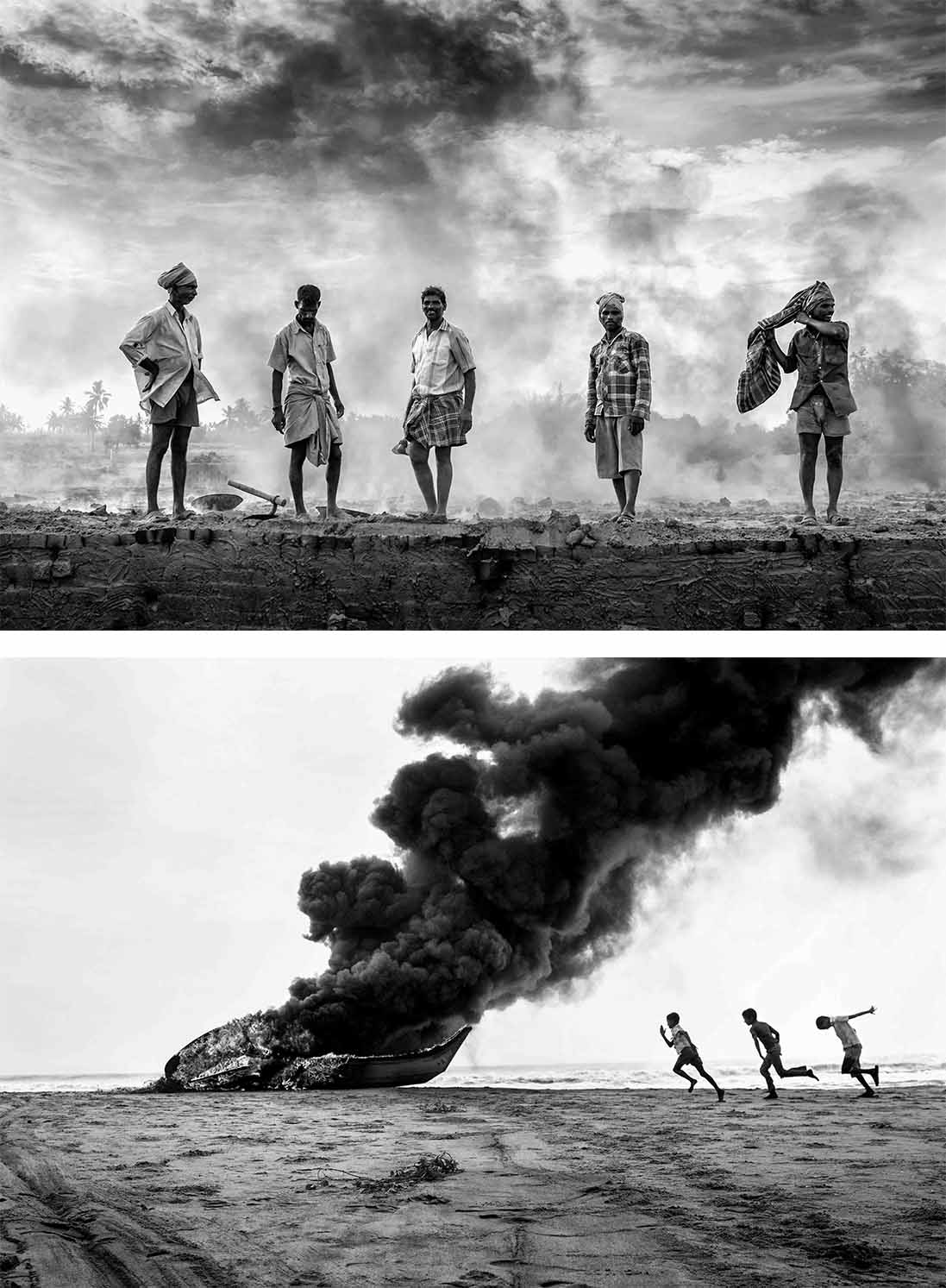
To me, the essence of photography is a “human-nature connection”. I have found that it is pointless to chase an image, for the visual chooses the artist and it is up to me, as the photographer, to be open to what the moment has to offer. In the mosaic of Indian society, there is always an emotional connection that I enjoy capturing in its many multi-layered forms. When I look through my lens, I see a complete universe with its many participants creating a very real, raw emotion as they unknowingly criss-cross with my memories and perspectives. My pictures are multi-layered, brimming with stories and unanswered questions hence, I shoot in black and white. It removes any distractions, allowing one to focus on the emotions and energy that the image radiates. Black and white is also symbolic of equality. Having faced many incidents of discrimination and humiliation due to the stigma around the wealth divide and the caste system, photography is my way of portraying the world on a level platform, where everyone is seen and treated with equal respect. I employ photography as a tool to archive and highlight the unique traditions and disappearing customs of my community. As an outcast myself, I enjoy celebrating differences and the uniqueness of people’s cultural identities, the lines of which are quickly blurring. It is this energy that I derive from my past and the environment that will continue to motivate me and fuel my passion.

Senthil Kumaran
India

Senthil Kumaran
India
Senthil Kumaran is an independent photographer and visual storyteller from South India, and holds an engineering degree in Information Technology. His work focuses on social, environmental issues, most recently revolving almost exclusively around environmental and wildlife projects, and he is now working on various nature reserves in India to document the conflict between humans and animals.
He has won several awards from international organisations such as the World Report Awards, Istanbul Photo Awards, National Geographic, World Wildlife Fund, Pano, Nature Image Awards and UNESCO.
His works have been exhibited in Angkor Photo Festival, Delhi Photo Festival, Phnom Penh Festival, Obscura Festival, Odessa Photo Days & Suwon International Photo Festival. His works have also been exhibited in various galleries in Italy, China, London, France, USA, Singapore, Sharjah Cambodia, Geneva & Malaysia. In addition his work has been featured in National Geographic, Getty Images, AFP, Terre Sauvage Magazine, Geographical, City Magazine, Photo Life Magazine, Outdoor Photography, India Today, Business Today, Open Magazine, Tehelka, Caravan, Traveller, Asian Photography & Better Photography.
Boundaries: Human and Tiger Conflict

India has more than 500 wildlife sanctuaries comprising 2.21% of country’s total surface area. These wildlife sanctuaries include 120 National parks and 48 Tiger reserves. India is home to an estimated 3000 of the 4600 surviving wild tigers on the planet. More than a thousand villages are situated around the sanctuary areas, and the livelihood of the people residing in these villages is solely dependent on agriculture, livestock grazing and honey collecting and fishing. Increasing human activity in the forests, low prey base and accelerated deforestation has led to a situation in which tigers often share space with humans who are dependent on the forest for their livelihood. This overlap of habitat leads to conflict between humans and tigers in many sanctuaries across the country. Tigers pose a serious threat to humans due to their predation, not only of humans, but also of livestock which many local communities depend on for their livelihood. This competition is largely due to the fact that the densities of wild prey are lower because of hunting and competition with livestock. The local people have poisoned their livestock to kill the tigers, which, in turn, has created another major co-existence crisis between humans and tigers in many sanctuaries across the country. In order to mitigate the conflict between humans and tigers the government has also strategized the approach of human relocation which has many practical hurdles.
Boundaries: Human and Tiger Conflict
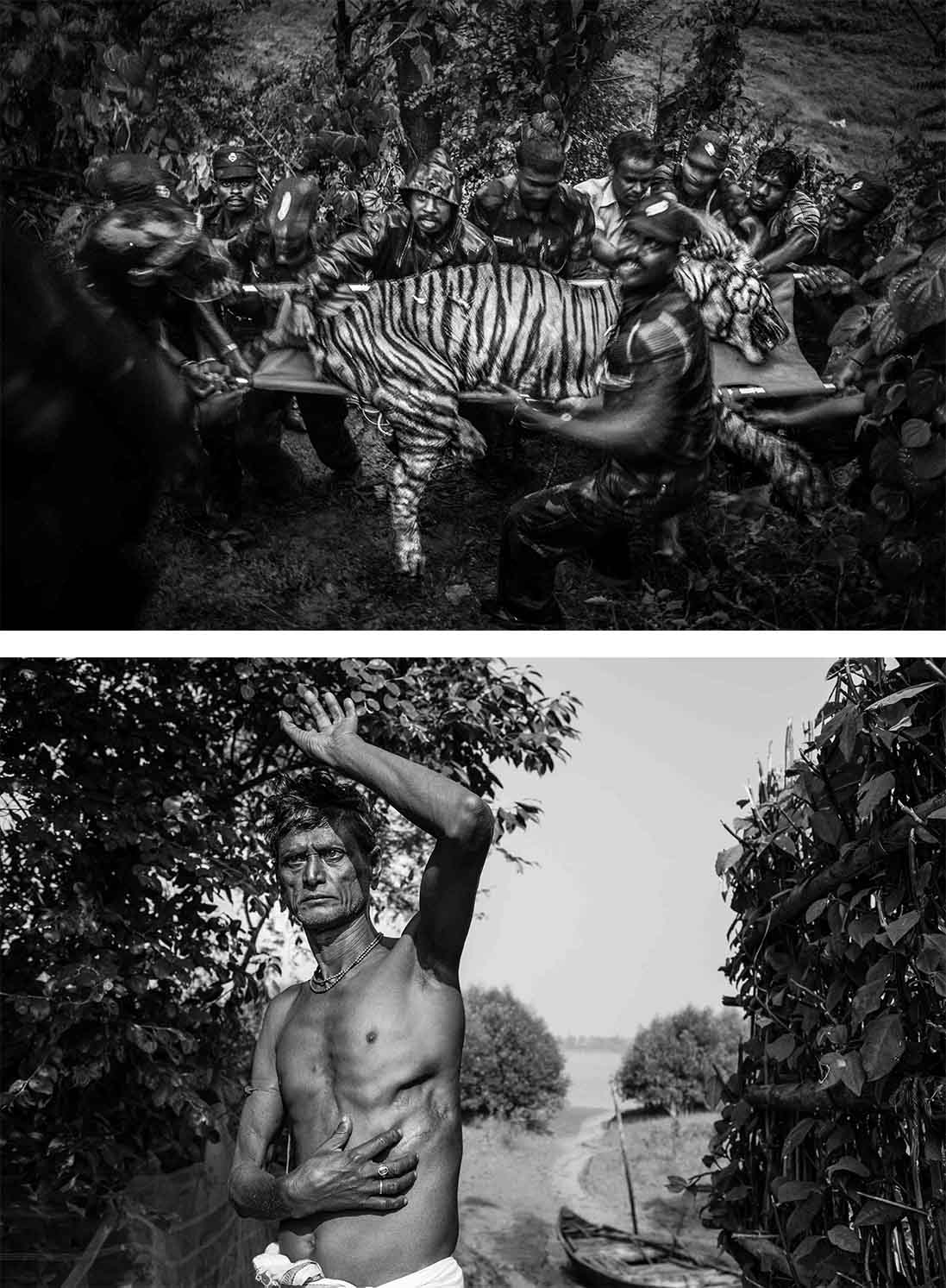
India has more than 500 wildlife sanctuaries comprising 2.21% of country’s total surface area. These wildlife sanctuaries include 120 National parks and 48 Tiger reserves. India is home to an estimated 3000 of the 4600 surviving wild tigers on the planet. More than a thousand villages are situated around the sanctuary areas, and the livelihood of the people residing in these villages is solely dependent on agriculture, livestock grazing and honey collecting and fishing. Increasing human activity in the forests, low prey base and accelerated deforestation has led to a situation in which tigers often share space with humans who are dependent on the forest for their livelihood. This overlap of habitat leads to conflict between humans and tigers in many sanctuaries across the country. Tigers pose a serious threat to humans due to their predation, not only of humans, but also of livestock which many local communities depend on for their livelihood. This competition is largely due to the fact that the densities of wild prey are lower because of hunting and competition with livestock. The local people have poisoned their livestock to kill the tigers, which, in turn, has created another major co-existence crisis between humans and tigers in many sanctuaries across the country. In order to mitigate the conflict between humans and tigers the government has also strategized the approach of human relocation which has many practical hurdles.

Zhou HanShun
Singapore

Zhou HanShun
Singapore
Zhou HanShun is an artist, photographer, and art director. He was born in Singapore and graduated from Nanyang Academy of Fine Art (Singapore), and RMIT University (Melbourne), he went on to make a living as an art director, and continues to pursue his passion as a visual storyteller and photographer.
He uses photography as a way to explore, investigate and document the culture and people in the cities he has lived in. Apart from discovering the aspects of everyday life, his work also seeks to explore the notion of spirituality and humanity in the urban environment. HanShun often photographs with intuition and creates work with a sense of spontaneity.
HanShun has exhibited at the Revela'T Contemporary Analog Photography Festival (2020), Lishui Photography Festival (2019), Mt. Rokko International Photography Festival (2019), KG+ Kyotographie Satellite Event (2018), Tumbas Cultural Centre in Thessaloniki, Greece for Photoeidolo (2017), the Molekyl Gallery in Sweden, for the Malmo Fotobiennal (2017), the Gallery under Theatre in Bratislava, Slovakia for The Month of Photography Bratislava (2017), the Czech China Contemporary Museum in Beijing for the SongZhuang International Photo Biennale(2017), the PhotoMetria Parallel Voices exhibition in Greece (2016), the Addis FotoFest in Ethiopia (2016), among others.
Frenetic City

To say life moves fast in a city is an understatement. People go through life in an uncompromising, chaotic pace, overcoming and absorbing anything in their path. Time in the city seem to flow quicker, memories in the city tend to fade away faster. Nothing seems to stand still in a city. A UN report suggested that by 2050, the world's population would reach 10 billion, with three-quarters of humanity living in our already swelling cities. Frenetic City examines the intense and chaotic environment of Hong Kong, one of the most densely populated cities in the world. Created with multiple exposures on a single B&W negative, each of the photographs in this series is not of a singular moment in time, but a multitude of moments in time captured in a single frame.
Frenetic City

To say life moves fast in a city is an understatement. People go through life in an uncompromising, chaotic pace, overcoming and absorbing anything in their path. Time in the city seem to flow quicker, memories in the city tend to fade away faster. Nothing seems to stand still in a city. A UN report suggested that by 2050, the world's population would reach 10 billion, with three-quarters of humanity living in our already swelling cities. Frenetic City examines the intense and chaotic environment of Hong Kong, one of the most densely populated cities in the world. Created with multiple exposures on a single B&W negative, each of the photographs in this series is not of a singular moment in time, but a multitude of moments in time captured in a single frame.

Vasiliy Kolotilov
Russia

Vasiliy Kolotilov
Russia
Vasiliy Kolotilov (1983) is a Russian photographer based in Moscow. He graduated from DocDocDoc Photojournalism School in 2016 after almost a decade working as a journalist.
Kolotilov participated in the Summer School Photography Workshop by Andrei Polikanov in 2016, and in the 30th anniversary Eddie Adams Workshop in 2017.
His book entitled The Black notebook was selected among finalists and exhibited in Hyderabad Photofestival in India, Cosmos Photobook Dummy Award, in Arles, France, FUAM dummy book award in Istanbul and the Photobook Printzine Fest in Saint Petersburg, Russia.
Kolotilov takes a personal note on all his works, with an acute and deep sense of cultural understanding. In Spartans for example he explores an amateur Moscow based American football team where the team members are doing their best to keep playing their favourite sport amid the economic crisis and ever growing anti-American hysteria in Russian society
His first project about the community of Russians playing American football was completed in 2016 and published by the New York Times Lens blog. His other work were also published by notable media platforms such as The Los Angeles Times, GEO, La Presse, Jyllands-Posten, Gazeta Wyborcza, Mediazona, Takie Dela Media among others.
The Homecoming

After the Soviet Union collapsed in 1991, a nation that once spanned nine time zones and 15 republics began a painful search for new identities in the post-Soviet world. In Russia, a generation was left resenting the loss of their country’s stature in the world. A revival of imperialism emerged in support of reviving the former glory of the country. The clashing searches for identities became the main ingredients fueling both left-and right-wing ideology. In 2014, Russia's actions sparked a revival of the imperial narrative resulting in a stream of volunteers going to Eastern Ukraine. Driven by their beliefs, led by the state media or attempting to escape from reality, volunteer soldiers from various Russian cities flocked to take active part in what became the Donbas war. The war took a heavy toll on many of the volunteers. Thousands were killed in battlefields and their bodies unceremoniously taken back over the border to Russia. Still more were left with life-altering wounds or lost limbs. On their return home, the volunteers found themselves in limbo. Traumatised, regarded with scepticism by the rest of the society, ignored by the state, they created their own parallel reality. They are trying to find their place in the world off the battlefield, at the same time constantly recreating war situations during military games and training in an unconscious attempt to break away from their experience. Almost all of them suffer from post-traumatic stress disorder but lack the medical care they need to treat an affliction, because the Russian government does not regard them as veterans. The photographer has been following groups of these returned Donbas volunteers for more than six months and plan to keep on with the project for at least another year. It reveals the side of the Ukrainian war that thus far has received little attention: These are the men—and there are thousands of them currently in Russia-- who were led to the battlefield by a false narrative promoted by their own government only to find themselves back where they started, searching for an identity.
The Homecoming

After the Soviet Union collapsed in 1991, a nation that once spanned nine time zones and 15 republics began a painful search for new identities in the post-Soviet world. In Russia, a generation was left resenting the loss of their country’s stature in the world. A revival of imperialism emerged in support of reviving the former glory of the country. The clashing searches for identities became the main ingredients fueling both left-and right-wing ideology. In 2014, Russia's actions sparked a revival of the imperial narrative resulting in a stream of volunteers going to Eastern Ukraine. Driven by their beliefs, led by the state media or attempting to escape from reality, volunteer soldiers from various Russian cities flocked to take active part in what became the Donbas war. The war took a heavy toll on many of the volunteers. Thousands were killed in battlefields and their bodies unceremoniously taken back over the border to Russia. Still more were left with life-altering wounds or lost limbs. On their return home, the volunteers found themselves in limbo. Traumatised, regarded with scepticism by the rest of the society, ignored by the state, they created their own parallel reality. They are trying to find their place in the world off the battlefield, at the same time constantly recreating war situations during military games and training in an unconscious attempt to break away from their experience. Almost all of them suffer from post-traumatic stress disorder but lack the medical care they need to treat an affliction, because the Russian government does not regard them as veterans. The photographer has been following groups of these returned Donbas volunteers for more than six months and plan to keep on with the project for at least another year. It reveals the side of the Ukrainian war that thus far has received little attention: These are the men—and there are thousands of them currently in Russia-- who were led to the battlefield by a false narrative promoted by their own government only to find themselves back where they started, searching for an identity.
EUROPE
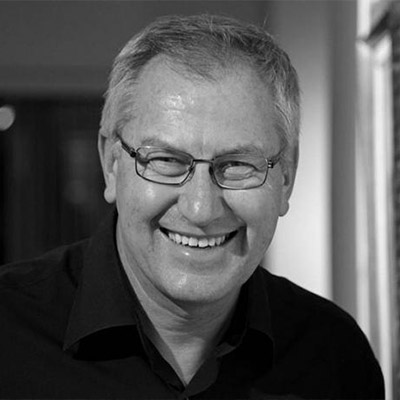
Alain Schroeder
Belgium

Alain Schroeder
Belgium
Alain Schroeder (1955) is a Belgian photojournalist with over four decades of experience. He began his career as a sports photographer in the 1980’s before shooting book assignments and editorial pieces in art, culture and the documentation of human stories.
In 2013, he uprooted his life, trading-in his shares in Reporters, to pursue life on the road with a camera. Schroeder now travels the world shooting stories with a focus on social issues, people and their environments.
Schroeder states “I am not a single shot photographer. I think in series… I strive to tell a story in 10-15 pictures, capturing the essence of an instant with a sense of light and framing.”
He has won many international awards including Nikon Japan, Nikon Belgium, Felix-Schoeller, TPOTY, Istanbul Photo, Days Japan, Trieste Photo, PX3, IPA, MIFA, BIFA, PDN, the Fence, LensCulture, Siena, POYI and World Press Photo.
Story Kid Jockeys

Indonesia, Sumbawa Island. Once a game between neighbours to celebrate a good harvest, horse racing was transformed into a spectator sport by the Dutch in the 20th century to entertain officials and nobility. The unique features of Sumbawa racing are the notoriously small horses and fearless child jockeys, aged 5-10, who mount bareback, barefoot and with little protective gear racing at speeds of up to 80 kms per hour. Their only protection is the « Sandro », a spiritual healer who protects young jockeys by performing elaborate rituals and guiding them in training. Maen Jaran (the Indonesian name of the game) takes place during important festivals and holidays throughout the year at racetracks across the island and remains a favourite pastime for Sumbawans. Rules have evolved, horses are now classified by age and height, yet kid jockeys continue to risk their lives for 3,50 to 7 euros per mount often racing 5 to 6 times a day for a week, pushed by parents and relatives given the potential earnings that far outweigh the poor returns on crops often plagued by drought.
Story Kid Jockeys
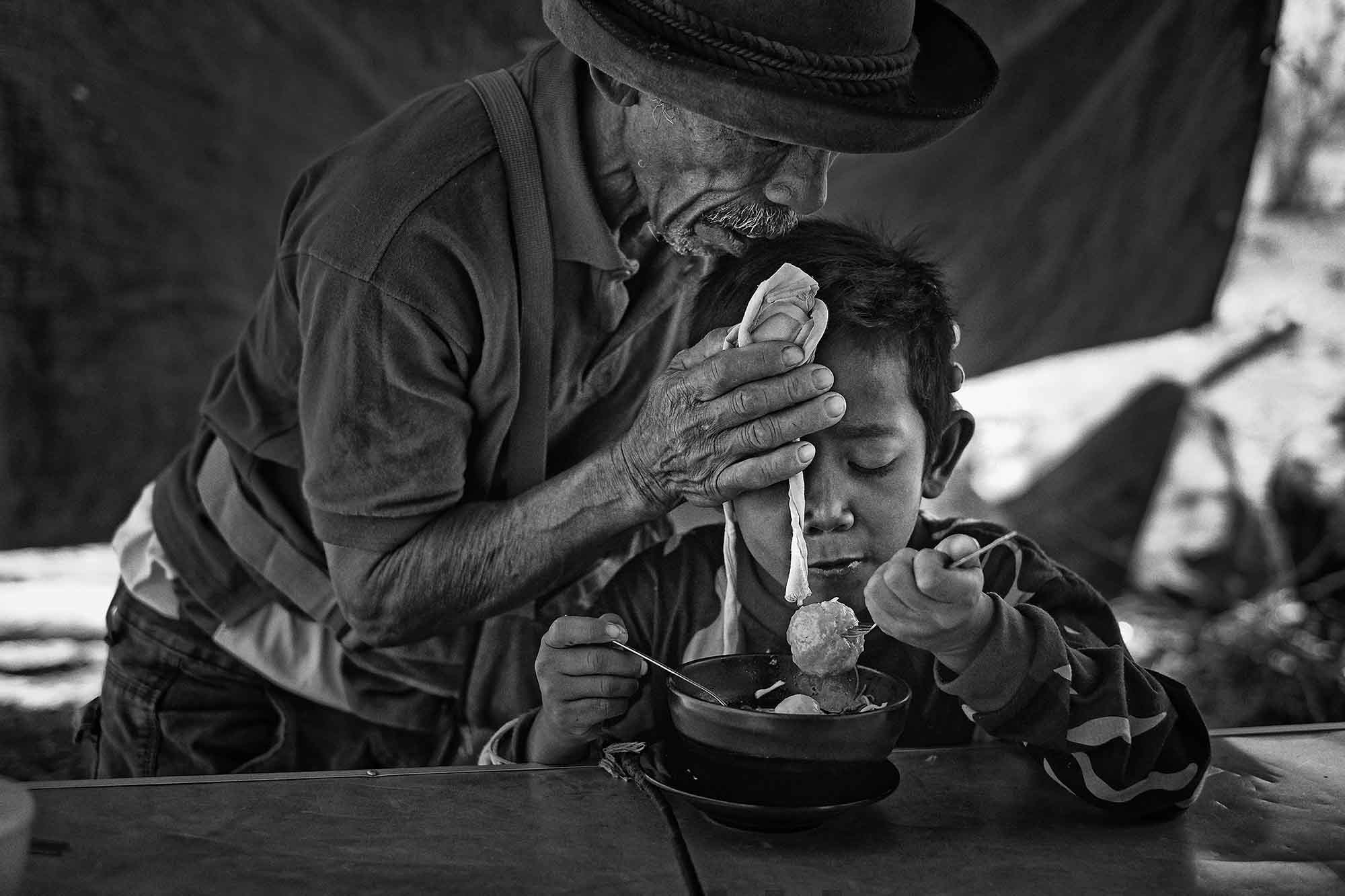
Indonesia, Sumbawa Island. Once a game between neighbours to celebrate a good harvest, horse racing was transformed into a spectator sport by the Dutch in the 20th century to entertain officials and nobility. The unique features of Sumbawa racing are the notoriously small horses and fearless child jockeys, aged 5-10, who mount bareback, barefoot and with little protective gear racing at speeds of up to 80 kms per hour. Their only protection is the « Sandro », a spiritual healer who protects young jockeys by performing elaborate rituals and guiding them in training. Maen Jaran (the Indonesian name of the game) takes place during important festivals and holidays throughout the year at racetracks across the island and remains a favourite pastime for Sumbawans. Rules have evolved, horses are now classified by age and height, yet kid jockeys continue to risk their lives for 3,50 to 7 euros per mount often racing 5 to 6 times a day for a week, pushed by parents and relatives given the potential earnings that far outweigh the poor returns on crops often plagued by drought.
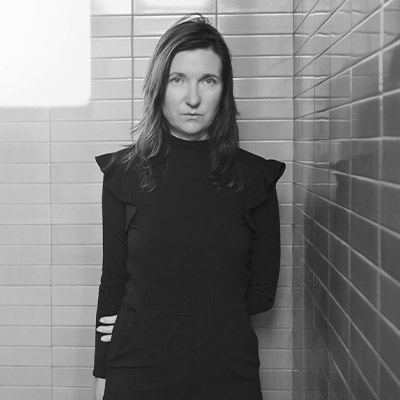
Annick Donkers
Belgium

Annick Donkers
Belgium
Annick Donkers is a documentary photographer from Antwerp who currently lives and works in Mexico City. She obtained a Masters Degree in Psychology, after which she became a full-time photographer.
She received a grant from the Mexican Ministry of Foreign Affairs in 2008 and was selected to participate in the 2008 Seminar on Contemporary Photography at the Centro de la Imagen in Mexico City. Her work has been published and exhibited internationally.
She was one of the winners at the Survival International Competition (UK - 2015), won an award at the San José Photo Festival (Uruguay - 2016), the Sony Awards (UK - 2016), the MIFA awards (Russia - 2016), the IPA awards (USA - 2016), the TIFA awards (Japan - 2016), received an honorable mention at the Px3 Prix de la Photo (France - 2016), was selected at Latin American Photography vol.5/vol.6/vol.7 (USA - 2016-2017-2018) and for the cover of Dodho magazine (Spain - 2016). She was on the Shortlist for the Kolga Awards (Georgia – 2017) and Athens Photofestival (Greece - 2017), received the Premio Pedro Meyer at the Contest for Contemporary Photography (Mexico - 2017), an honorable mention at ND Awards and Chromatic Awards (2017), was the winner of the 2017 Color Prize of Dodho Magazine and the IPOTY Awards (2018), selected at Addis Fotofest (Ethiopia - 2018), Fotofestival Pelt (Belgium - 2019), Shortlist Belfast Photofestival (Ireland - 2019), Shortlist Solo Expo PHest via PHmuseum (UK - 2019), Nomination International Color Awards (USA - 2019), Selection Athens Photofestival (Greece – 2019), Selection Women Grant via Phmuseum(UK – 2019), Nomination International Photography Grant (2019), Selection Addis Fotofest (Ethiopia – 2020), Nomination International Color Awards (USA – 2020), Selection Dodho Magazine (Spain – 2020), Finalist Critical Mass Photolucida (USA – 2020), Honorable mention IPA awards ‘One shot Pandemic’ (USA – 2021), Nomination C/O Berlin (Germany – 2021).
UN-IDENTIFIED

UN-IDENTIFIED is a series about the belief in alien species as well as the ways in which people construct their own world and perceptions. I am intrigued by the manners in which people deal with this belief on a personal, psychological and collective level. The series is based on a personal experience I had at the age of 10, which triggered my passion and curiosity to understand the psychology behind one's belief in alien species. The idea for the series came after visiting the International UFO Congress in Phoenix. I was impressed by the multitude of people attracted to this event and the secrecy surrounding the theme. It felt like entering a complete new universe, a subculture where spaceships, contacts by creatures from other dimensions, space travel and abduction are part of the believer’s reality, although seen as strange and met with scepticism by outsiders. Carl Jung once said that modern man projects his inner state onto the heavens. In a cyber culture, full of uncertainties, catastrophes and fears of the unknown, people are looking for a way to define themselves again and feel secure in a group of like-minded people. By giving the unexplainable a divine and supernatural character, they feel hopeful and at the same time chosen to be part of a sacred mission to disclose the truth. I am currently working on a photobook called Un-identified in collaboration with Hydra.lat in Mexico City.
UN-IDENTIFIED

UN-IDENTIFIED is a series about the belief in alien species as well as the ways in which people construct their own world and perceptions. I am intrigued by the manners in which people deal with this belief on a personal, psychological and collective level. The series is based on a personal experience I had at the age of 10, which triggered my passion and curiosity to understand the psychology behind one's belief in alien species. The idea for the series came after visiting the International UFO Congress in Phoenix. I was impressed by the multitude of people attracted to this event and the secrecy surrounding the theme. It felt like entering a complete new universe, a subculture where spaceships, contacts by creatures from other dimensions, space travel and abduction are part of the believer’s reality, although seen as strange and met with scepticism by outsiders. Carl Jung once said that modern man projects his inner state onto the heavens. In a cyber culture, full of uncertainties, catastrophes and fears of the unknown, people are looking for a way to define themselves again and feel secure in a group of like-minded people. By giving the unexplainable a divine and supernatural character, they feel hopeful and at the same time chosen to be part of a sacred mission to disclose the truth. I am currently working on a photobook called Un-identified in collaboration with Hydra.lat in Mexico City.

Bénédicte Desrus
France

Bénédicte Desrus
France
Bénédicte Desrus is a French documentary photographer based in Mérida, Yucatán, Mexico. She is represented by Sipa Press USA and has worked throughout Europe, East Africa, the United States and Latin America. She focuses on social and human-rights issues around the world. Her long-term projects explore the lives of people ostracised by society, and the communities they form to survive and find respect. Recent stories explored the lives of elderly sex workers living in a shelter in Mexico City, the persecution of homosexuals in Uganda, the killing of albinos in Tanzania and the global obesity epidemic. She has earned numerous awards and distinctions including the Indian Photography Festival – Hyderabad (India), The Pride Photo Award (The Netherlands), The Moscow International Photo Awards (Russia), The Humanity Photo Awards (China), The New York Photo Awards (USA), the NPPA’s Best of Photojournalism (USA), The OPEN Photo – OSISA / Open Society Foundations (South Africa), The Kuala Lumpur International Photo Awards (Malaysia) and The Open Society Institute - Moving Walls 18 (USA). She is the co-author of the book Las amorosas más bravas or Tough Love. The eight-year-long project documents the day-to-day lives of the women living at Casa Xochiquetzal, a unique shelter for elderly sex workers in Mexico City.
THE WOMEN OF CASA XOCHIQUETZAL (2008-2018)

Have you ever thought about what happens to sex workers when they get old?
For ten years, I documented the day-to-day lives of the women living at Casa Xochiquetzal, a unique shelter for elderly sex workers in Mexico City. In downtown Mexico City, elderly women offer sex in exchange for a few pesos or a bit to eat, they live in appalling conditions on the street. Ostracised by society, often rejected by their families and with no place to spend their final years, they are forced to continue to practise their profession. Hope for a better life is beginning to crystallise, as the local government has donated a building, located in one of the poorest and most marginalized neighborhoods in Mexico City, to house these elderly sex workers - and also provides daily meals and utilities for the home. The house, named Xochiquetzal after the Aztec goddess of the earth and love came into being in 2006, thanks to Carmen Muñoz, a sex worker herself, with the help of prominent female artists and feminist groups. The project seeks to spur action to improve the living conditions of elderly sex workers. As the only shelter of its kind in Latina America, it gives older and independent sex workers the space and opportunity to gain dignity and learn about their human rights. It also offers its residents medical and psychiatric care, education and handicrafts training, as well as courses to help them rediscover their self-confidence and deal with traumatic aspects of their lives. The only condition is that they be over 55 years old and abide by a set of basic rules. Some continue to work in the sex trade, and some not. They are all encouraged to set up small businesses. “In the end, we all end up in peace, because for us this house is a place of peace. It is ours." - A resident of Casa Xochiquetzal.
THE WOMEN OF CASA XOCHIQUETZAL (2008-2018)

Have you ever thought about what happens to sex workers when they get old?
For ten years, I documented the day-to-day lives of the women living at Casa Xochiquetzal, a unique shelter for elderly sex workers in Mexico City. In downtown Mexico City, elderly women offer sex in exchange for a few pesos or a bit to eat, they live in appalling conditions on the street. Ostracised by society, often rejected by their families and with no place to spend their final years, they are forced to continue to practise their profession. Hope for a better life is beginning to crystallise, as the local government has donated a building, located in one of the poorest and most marginalized neighborhoods in Mexico City, to house these elderly sex workers - and also provides daily meals and utilities for the home. The house, named Xochiquetzal after the Aztec goddess of the earth and love came into being in 2006, thanks to Carmen Muñoz, a sex worker herself, with the help of prominent female artists and feminist groups. The project seeks to spur action to improve the living conditions of elderly sex workers. As the only shelter of its kind in Latina America, it gives older and independent sex workers the space and opportunity to gain dignity and learn about their human rights. It also offers its residents medical and psychiatric care, education and handicrafts training, as well as courses to help them rediscover their self-confidence and deal with traumatic aspects of their lives. The only condition is that they be over 55 years old and abide by a set of basic rules. Some continue to work in the sex trade, and some not. They are all encouraged to set up small businesses. “In the end, we all end up in peace, because for us this house is a place of peace. It is ours." - A resident of Casa Xochiquetzal.
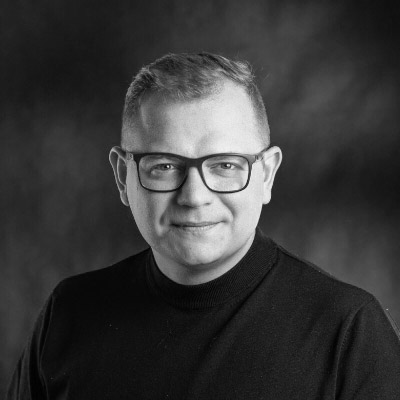
Dawid Zieliński
Poland

Dawid Zieliński
Poland
Dawid Zieliński is a freelance photographer, currently based in Poland. He documents social and environmental issues, blurring the lines between photojournalism, documentary practice and art. He works as an editorial photographer for international clients including Le Monde, Internazionale, Die Zeit, Le Temps, Gazeta Wyborcza and Tygodnik Powszechny.
In 2015, as a photojournalist for Magazyn Kontakt, he began covering the European refugee crisis, travelling to Turkey, The Balkans and Hungary numerous times. He then gradually shifted his interest from news-related reporting to documenting long-term impact of migration, with a particular concern for shifting sociopolitical dynamics. The ongoing work, known as Foreign Landscape, was widely recognized by POYI, NPPA Best of Photojournalism, Grand Press Photo, Krzysztof Miller Prize, CDS Documentary Prize, and exhibited in Poland, Spain, France, Belgium, Romania and Israel.
Since 2020 Dawid has been a member of Archive of Public Protests, a Polish collective founded by Rafał Milach (Magnum Photos), documenting protest culture in Poland. APP's photographers are motivated not only by “duty to archive” (Jacques Derrida) but also extending life of their images by making them accessible to researchers, artists and activists and thus bridging worlds of traditional photojournalism with those of art, academia and social activism. APP's collaborative work has been widely published (British Journal of Photography, Le Monde, Die Zeit, GUP Magazine) and exhibited (Museum of Modern Art in Warsaw, Visa pour l’Image in Perpignan, Peckham 24 Photo Festival in London, BOAN 1942 ARTSPACE in Seoul).
Dawid has won several awards in both photojournalism and arts including Pictures Of the Year International, NPPA Best of Photojournalism, International Photography Awards (IPA), Polish Ministry of Culture Scholarship in Visual Arts, Deutsche Bank VIEWS Award 2021, 2021 Polityka Passports
Foreign Landscape

Refugees arriving to Europe are sidelined from day one, forced to nonexistence on the edges of the First World, facing razor wires and hostile attitudes. Contemporary nomads with no sense of arrival, their fate echoes the age-old story of constant movement in today's liquid global society. Wars, famine, poverty and climate change continue to drive people out of their homes, communities, countries, to the unknown. They join millions who are already on the move, constantly, restlessly, occupying spaces on the margins of the first world. Continuously interacting with their surroundings and the landscape they encounter along the way, they leave their mark, however elusive. From subtle signs in the forest undergrowths to discarded blankets to makeshift food stalls. This new and unexpected human presence is transforming the environment inhabited and organised long ago, even if it's just for a day, a week or a month, as they keep moving through the landscape scarred by walls and fences, running, hiding and then running again. Instead of following the routine of descriptive and news oriented work that we've seen again and again, this issue deserves a more comprehensive approach. From the dynamics of landscape transformation along established migration routes and traces of migrants presence, to immigration enforcement and structures of control, to information and disinformation, illusions of threat and propaganda spread by local and state authorities or various groups of interest. From men, women and children locked in refugee camps and other temporary facilities to those braving cold winters and hostile attitudes outside organised humanitarian assistance. They will continue to come. It's just a matter of time. With shrinking arable farmland, desertification and depleted fisheries, climate change and new conflicts, millions of refugees will arrive in Europe in decades to come, irreversibly transforming the social landscape of the continent.
Foreign Landscape
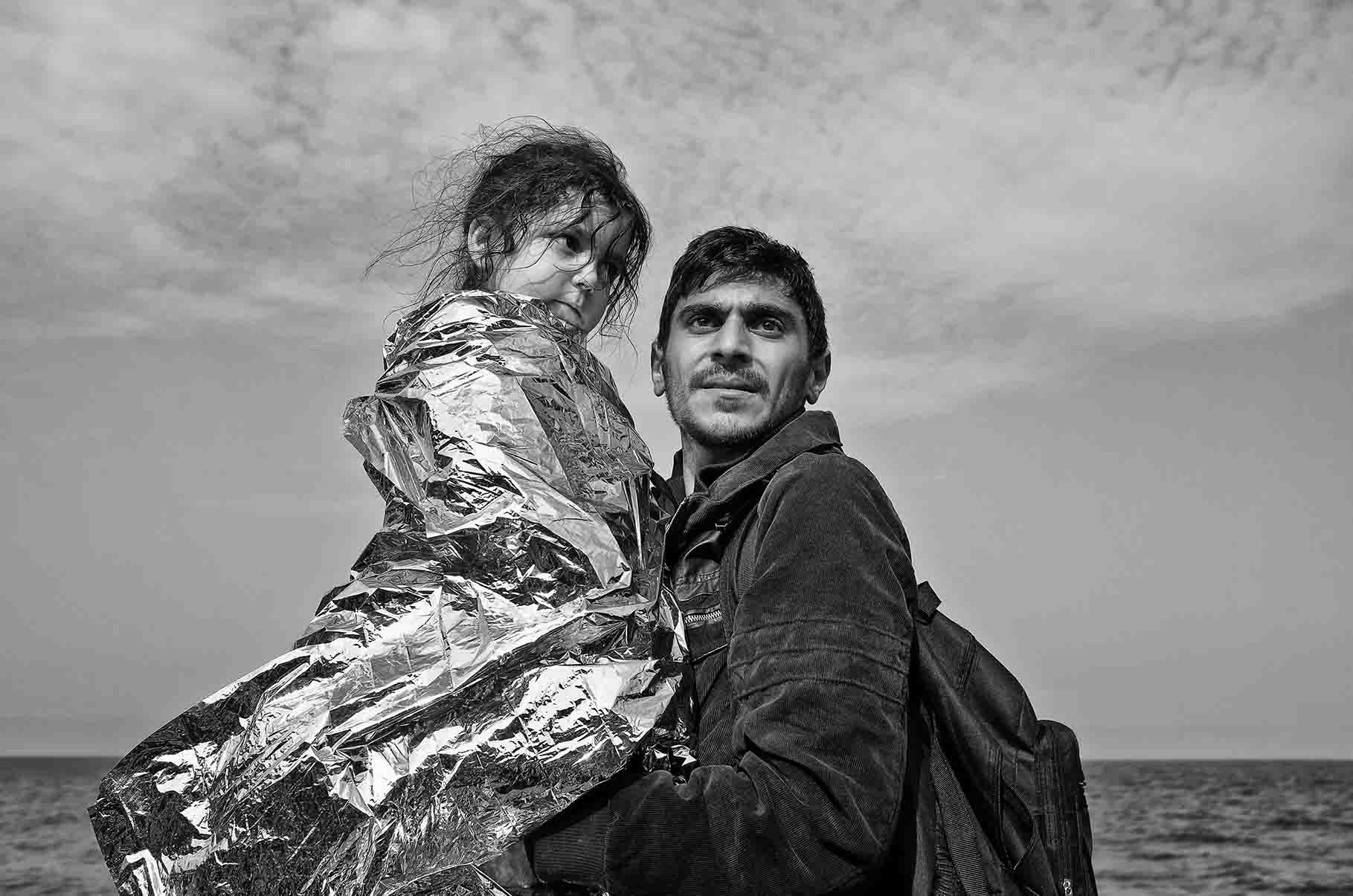
Refugees arriving to Europe are sidelined from day one, forced to nonexistence on the edges of the First World, facing razor wires and hostile attitudes. Contemporary nomads with no sense of arrival, their fate echoes the age-old story of constant movement in today's liquid global society. Wars, famine, poverty and climate change continue to drive people out of their homes, communities, countries, to the unknown. They join millions who are already on the move, constantly, restlessly, occupying spaces on the margins of the first world. Continuously interacting with their surroundings and the landscape they encounter along the way, they leave their mark, however elusive. From subtle signs in the forest undergrowths to discarded blankets to makeshift food stalls. This new and unexpected human presence is transforming the environment inhabited and organised long ago, even if it's just for a day, a week or a month, as they keep moving through the landscape scarred by walls and fences, running, hiding and then running again. Instead of following the routine of descriptive and news oriented work that we've seen again and again, this issue deserves a more comprehensive approach. From the dynamics of landscape transformation along established migration routes and traces of migrants presence, to immigration enforcement and structures of control, to information and disinformation, illusions of threat and propaganda spread by local and state authorities or various groups of interest. From men, women and children locked in refugee camps and other temporary facilities to those braving cold winters and hostile attitudes outside organised humanitarian assistance. They will continue to come. It's just a matter of time. With shrinking arable farmland, desertification and depleted fisheries, climate change and new conflicts, millions of refugees will arrive in Europe in decades to come, irreversibly transforming the social landscape of the continent.

Geert Van Kesteren
Netherlands

Geert Van Kesteren
Netherlands
Geert van Kesteren (IJsselstein, b. 1966) is a Dutch photojournalist and filmmaker based in Jaffa, Israel. He worked as a war
correspondent for Newsweek and Stern, among others. His most notable photo books are Why Mister, Why? (2004) and Baghdad
Calling (2008), both focusing on the Iraq War. His works are featured in collections of leading museums, including the Rijksmuseum
in Amsterdam. He was awarded the prestigious Infinity Award at the International Centre of Photography in New York, a World Press
Photo Award, and many book-awards. His long-term work (1997-2000) documenting the HIV/AIDS pandemic in Africa was published
in Newsweek over 16 pages, and received the ‘Zilveren Camera’ and ‘Photojournalist of the Year’ awards.
The Believers

As a photojournalist, I documented wars and natural disasters. As a witness to extreme violence, aggression, destruction, and mortality, I have a long-standing fascination with belief, worship, and faith; a human capacity to accept that something exists even though it remains invisible or without proof. While there remain important issues that organized religion addresses, one ought to question why we deprecate our own being and conjure a non-being, a God, as our master to whom we give our authority. Do we really receive in return an eternal purpose and meaning to life? Shall we not cease to exist biologically, and let ourselves pass on to eternity? The cosmos and mother Earth were here before us and will remain after we are gone. As such, the concept of God as the one who created and rules the universe can prove to be difficult to grasp. While we are all believers, taming nature is mankind’s eternal delusion. In search of an answer, I decided to walk the streets and valleys of the Biblical landscape the Holy Land: Israel and the Palestinian Territories. With a camera in hand, I depart with crowds of pilgrims amongst the chaos of massive spiritual gatherings – before COVID – to try to understand and hopefully witness the supernatural. I ignored the Israeli-Palestinian conflict. I approach the gods of Islam, Judaism, Christianity with equal intentions and intensity. In order to get a broader perspective on the theme of belief, I touch on non-religious aspects of faith, relating to our contemporary expressions of communal celebrations and the omnipresent trust in the worldwide data flow and algorithms – through our smartphone, for example. Perhaps, in fact, are Data our new invention of a higher, omniscient, omnipotent, and omnipresent being? How are they different from our current concept of a god? My observations resulted in a 27-screen audiovisual installation. 27 Sensors (monitors) make time and space fluid. The viewer can be anywhere, as they can sense in different times and places simultaneously. Here you don't need memories, you can move in between objects, people, data, and different beliefs. It makes the unknown and unfamiliar relevant because there is always something you will feel as your belonging. With this kind of presentation, the images have no meaning. The meaning derives from how the enchanting cinematography blends in with other observations, the hypnotic soundscape, and the viewer’s own knowledge, beliefs, education, or upbringing. This way we're watching ourselves. We think of ourselves, our family, and friends, who follow suit to the pilgrimage, and we ask: why are we doing all this? The installation became a psychedelic trip of worship and bliss, an experience resembling our desperate quest for ‘the meaning of life’.
The Believers

As a photojournalist, I documented wars and natural disasters. As a witness to extreme violence, aggression, destruction, and mortality, I have a long-standing fascination with belief, worship, and faith; a human capacity to accept that something exists even though it remains invisible or without proof. While there remain important issues that organized religion addresses, one ought to question why we deprecate our own being and conjure a non-being, a God, as our master to whom we give our authority. Do we really receive in return an eternal purpose and meaning to life? Shall we not cease to exist biologically, and let ourselves pass on to eternity? The cosmos and mother Earth were here before us and will remain after we are gone. As such, the concept of God as the one who created and rules the universe can prove to be difficult to grasp. While we are all believers, taming nature is mankind’s eternal delusion. In search of an answer, I decided to walk the streets and valleys of the Biblical landscape the Holy Land: Israel and the Palestinian Territories. With a camera in hand, I depart with crowds of pilgrims amongst the chaos of massive spiritual gatherings – before COVID – to try to understand and hopefully witness the supernatural. I ignored the Israeli-Palestinian conflict. I approach the gods of Islam, Judaism, Christianity with equal intentions and intensity. In order to get a broader perspective on the theme of belief, I touch on non-religious aspects of faith, relating to our contemporary expressions of communal celebrations and the omnipresent trust in the worldwide data flow and algorithms – through our smartphone, for example. Perhaps, in fact, are Data our new invention of a higher, omniscient, omnipotent, and omnipresent being? How are they different from our current concept of a god? My observations resulted in a 27-screen audiovisual installation. 27 Sensors (monitors) make time and space fluid. The viewer can be anywhere, as they can sense in different times and places simultaneously. Here you don't need memories, you can move in between objects, people, data, and different beliefs. It makes the unknown and unfamiliar relevant because there is always something you will feel as your belonging. With this kind of presentation, the images have no meaning. The meaning derives from how the enchanting cinematography blends in with other observations, the hypnotic soundscape, and the viewer’s own knowledge, beliefs, education, or upbringing. This way we're watching ourselves. We think of ourselves, our family, and friends, who follow suit to the pilgrimage, and we ask: why are we doing all this? The installation became a psychedelic trip of worship and bliss, an experience resembling our desperate quest for ‘the meaning of life’.
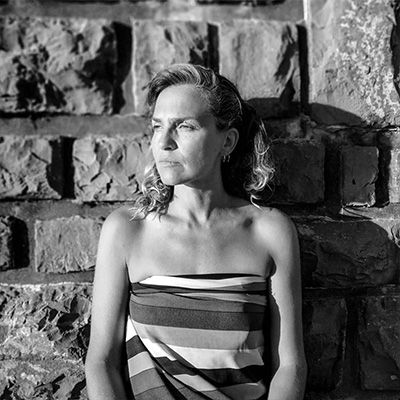
Gloria Oyarzabal
Spain

Gloria Oyarzabal
Spain
Gloria Oyarzabal Lodge (London,1971) Spanish artist and photographer with a Bachelor of Fine Arts (UCM). Her professional practice spans photography, cinema and teaching.
She was a programmer and co-founder of the Independent Cinema La Enana Marrón (The Brown Dwarf) in Madrid (1999-2009) which was dedicated to the diffusion of the author, experimental and alternative cinema.
She lived in Mali for 3 years, deepening her interest in the processes of colonisation and decolonization, tactics of neo-colonialism and African Feminisms.
After her Master's degree in Creation and Development of Photographic Projects at Blankpaper School of Photography in Madrid (2014-15) her work was exhibited at Lagos Photo (Nigeria), Organ Vida (Croatia), FORMAT (U.K), Kaunas Foto (Lithuania), Athens Photo(Greece), PHE Photo España (Spain), Thessaloniki Museum of Photography (Greece), Odessa Photo Days (Ukraine), Bitume Festival Lecce (Italy), Encontros da Imagem (Portugal) and ArtPhotoBCN, ...among others.
In 2017 she was selected for the artist residence Ranchito Matadero Nigeria-South Africa developing her project between Madrid and Lagos.
The prizes and awards she has won include Can Basté (2016), Carta Blanca EFTI (2016), Landskrona Dummy Award (2017), Discovery Award Encontros da Imagem (2018), Fotofestiwal Grand Prix (2019), Images Vevey Photobook Award (2019) which will enable her to publish her second photobook on her project about colonisation of the concept of “woman”, as well as PHOTOMED 1st Prize (2019), Meitar Award for Excellence in Photography PHOTO IS:RAEL (2019).
WOMAN NO GO’GREE

Empires by their very nature, embody and institutionalise differences between colony and colonial subjects. Imperial imagery floods popular culture. Gender categories were one kind of bio-logic tradition that European colonialism institutionalised in African cultures. Significant religious and linguistic evidence shows that Yoruba and Igbo societies were not gendered; social practices such as division of labour, kinship, profession and monarchical structures weren’t ordered along gender lines, but rather lineage or age. The infantilization of women is a part of the western patriarchal system that was also exported with the colonisation of the mind, configuring a state of vulnerability, creating the path to dependency. Are social relations in all societies organized around biological sexual difference? Is the male body in African societies seen as normative and therefore a channel for the exercise of power? Rethinking gender as a western construction, feminism's approach to the "woman question” is a western one, without a proper lens through which to engage African society. Thus, the three central concepts that have been the pillars of Western feminism -women, gender, sisterhood- are only understood with a careful attention to the patriarchal nuclear family from which they have emerged as a familiar form, far from universal. One consequence of Eurocentrism is the racialization of knowledge. Europe is held as the only source of legitimate knowledge and - as an extension, Europeans are held as the only legitimate thinkers. In addition, male privilege as an essential part of the European ethos is implicit in the culture of “modernity”. But what if “modernity” models bring us to a new vision of othering? Maybe understanding History will allow us to overcome the social and symbolic ascription to the difference between sexes, and open us up to other factors for the construction of identity. The title is a phrase from Fela Kuti’s song Lady (Shakara,1972), it was produced twelve years after Nigeria’s independence, and two years after the end of the Nigerian civil war. A parallel discussion about African women becoming westernised was taking place.
WOMAN NO GO’GREE
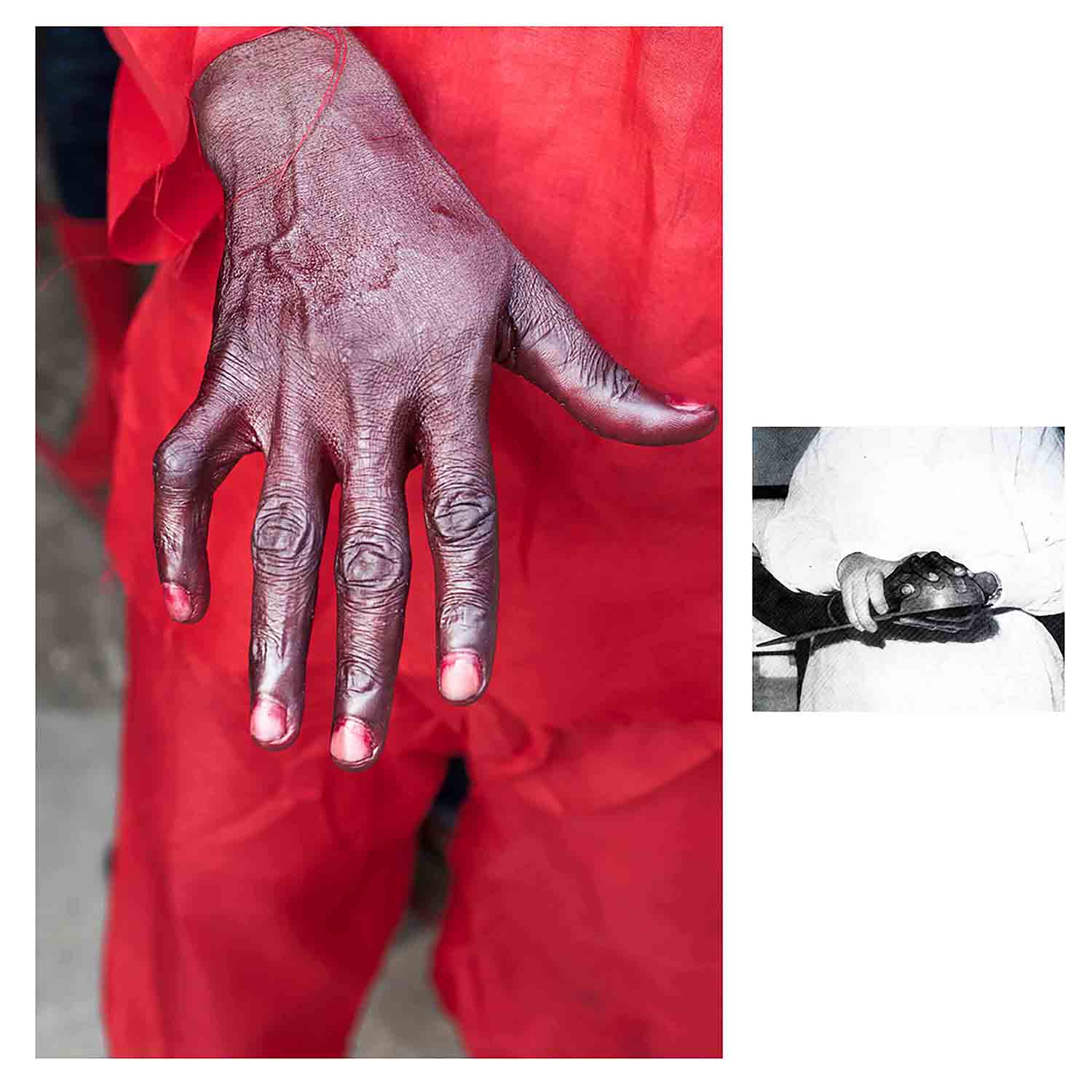
Empires by their very nature, embody and institutionalise differences between colony and colonial subjects. Imperial imagery floods popular culture. Gender categories were one kind of bio-logic tradition that European colonialism institutionalised in African cultures. Significant religious and linguistic evidence shows that Yoruba and Igbo societies were not gendered; social practices such as division of labour, kinship, profession and monarchical structures weren’t ordered along gender lines, but rather lineage or age. The infantilization of women is a part of the western patriarchal system that was also exported with the colonisation of the mind, configuring a state of vulnerability, creating the path to dependency. Are social relations in all societies organized around biological sexual difference? Is the male body in African societies seen as normative and therefore a channel for the exercise of power? Rethinking gender as a western construction, feminism's approach to the "woman question” is a western one, without a proper lens through which to engage African society. Thus, the three central concepts that have been the pillars of Western feminism -women, gender, sisterhood- are only understood with a careful attention to the patriarchal nuclear family from which they have emerged as a familiar form, far from universal. One consequence of Eurocentrism is the racialization of knowledge. Europe is held as the only source of legitimate knowledge and - as an extension, Europeans are held as the only legitimate thinkers. In addition, male privilege as an essential part of the European ethos is implicit in the culture of “modernity”. But what if “modernity” models bring us to a new vision of othering? Maybe understanding History will allow us to overcome the social and symbolic ascription to the difference between sexes, and open us up to other factors for the construction of identity. The title is a phrase from Fela Kuti’s song Lady (Shakara,1972), it was produced twelve years after Nigeria’s independence, and two years after the end of the Nigerian civil war. A parallel discussion about African women becoming westernised was taking place.

Ilvy Njiokiktjien
Netherlands

Ilvy Njiokiktjien
Netherlands
Ilvy Njiokiktjien is an independent photographer and multimedia journalist based in the Netherlands, represented by VII Photo Agency and is a Canon Ambassador. She studied for a year in South Dakota (USA) before returning home to study journalism and photography. She graduated in 2006 and began working as a freelance photographer. She has worked in many parts of the world, with a focus on Africa.
As a documentary photographer, she covers current affairs and contemporary social issues. Her work has appeared in The New York Times, Der Spiegel, NRC Handelsblad, Telegraph Magazine and Stern, among others. Her pictures have been exhibited in several museums and photo festivals. After working on a story about right-wing organisation Kommandokorps in South Africa, she was listed by PDN as one of the “30 New and Emerging Photographers to Watch.” She was also named as one of 12 participants in the 2012 World Press Photo Joop Swart Masterclass. Accolades include a Canon AFJ Award, two World Press Photo Awards, and three POYi Awards.
BORN FREE – Mandela's Generation of Hope

A generation of young South Africans has been growing up since the country abandoned its repressive apartheid system in the early 1990’s. South Africa celebrated its first democratic elections in 1994 when Nelson Mandela became the first black president and decades of white minority rule came to an end. A new constitution gave black, coloured, Indian and white South Africans equal rights. During his five year presidency, Mandela focused on reconciliation and his vision of a successful rainbow nation. He stressed the importance of the young generation, that would grow up free from the country’s troubled past and could make this dream come true. During her work in South Africa in 2007, Dutch photojournalist Ilvy Njiokiktjien became intrigued by these born-frees, the first generation born after apartheid ended. Njiokiktjien portrays them in her own, personal and sometimes intimate style. “Equality is there on paper, but a majority of young people believe white South Africans still have better chances, as the legacy of centuries of inequality is still there.”
BORN FREE – Mandela's Generation of Hope
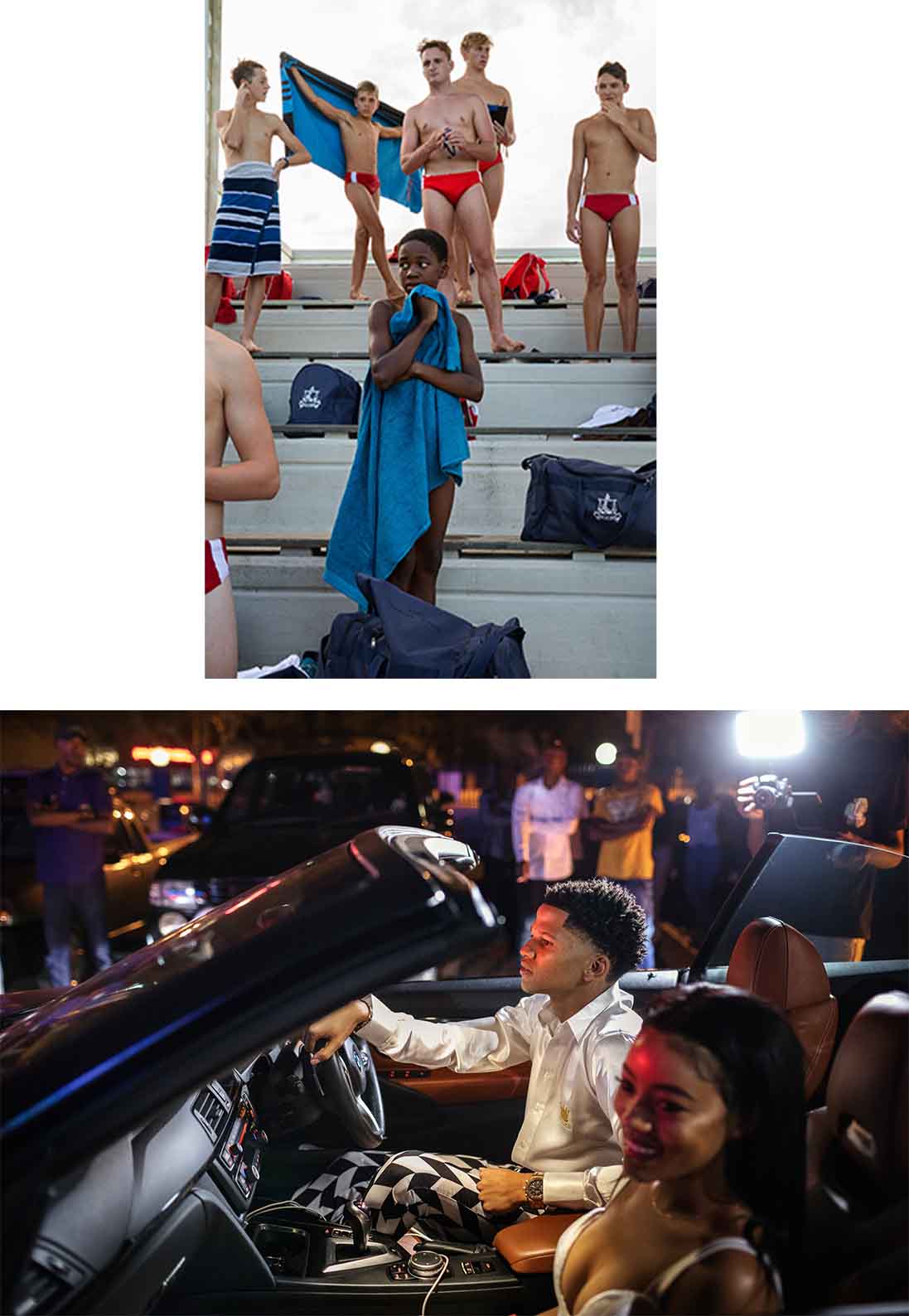
A generation of young South Africans has been growing up since the country abandoned its repressive apartheid system in the early 1990’s. South Africa celebrated its first democratic elections in 1994 when Nelson Mandela became the first black president and decades of white minority rule came to an end. A new constitution gave black, coloured, Indian and white South Africans equal rights. During his five year presidency, Mandela focused on reconciliation and his vision of a successful rainbow nation. He stressed the importance of the young generation, that would grow up free from the country’s troubled past and could make this dream come true. During her work in South Africa in 2007, Dutch photojournalist Ilvy Njiokiktjien became intrigued by these born-frees, the first generation born after apartheid ended. Njiokiktjien portrays them in her own, personal and sometimes intimate style. “Equality is there on paper, but a majority of young people believe white South Africans still have better chances, as the legacy of centuries of inequality is still there.”
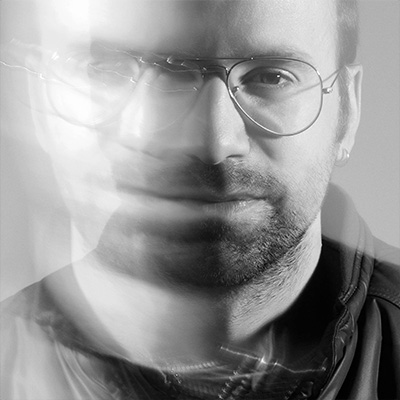
Jorge López Muñoz
Spain

Jorge López Muñoz
Spain
Jorge is a spanish photographer and visual artist based in Madrid. He has a Photography Degree and a Master of Fine Art Photography and Professional Projects. In 2022 he was the winner of Descubrimientos PHotoESPAÑA and will have an individual exhibition at the Festival in 2023. His work has been showed throughout the world, highlighting solo exhibitions in KATAJANOKKA OLD CUSTOMS HOUSE (Helsinki, Finland), PADDINGTON TOWN HALL (Sydney, Australia), MISIOU MANSION (Ioannina, Greece), VELES E VENTS Building (Valencia, Spain), Sala EFTI (Madrid, Spain), FOLA Fototeca Latinoamericana (Buenos Aires, Argentina) and No4 Gallery (Warsaw, Poland), among others. Also group exhibitions in Whitebox Gallery (Kuala Lumpur, Malaysia), Rectorate Gallery (Novi Sad, Serbia), Centro Cultural Las Cigarreras (Alicante, Spain), Centro Cultural Las Claras (Plasencia, Spain), Real Academia de Bellas Artes de San Fernando (Madrid, Spain), Galería Blanca Soto (Madrid, Spain), 59Rivoli Gallery (Paris, France), Somerset House (London, UK), MUO Museum of Arts and Crafts (Zagreb, Croatia), Sarajevo City Hall (Bosnia-Herzegovina), NAK Neuer Aachener Kunstverein (Aachen, Germany), Four Freedoms Park (New York, USA) and Kent State University Campus (Ohio, USA), among others. His photographs have been published in national and international magazines and media. He has created the images for two books: A QUELAR CABANYAL (Instituto Valenciano de la Cultura / Generalitat Valenciana, 2019) and ANTONIO ALVARADO BAJA COSTURA (Museo del Traje / Ministerio de Cultura y Deporte de España, 2022). Some of the awards he has received are PDN Photo Annual Photography Contest 2015, CANSON ART School Awards 2016, SAN JOSE FOTO Festival 2016, ZEISS Photography Award 2016, AI-AP LAF5 Latin American Fotografía 2016, CARTA BLANCA 2017, II Premio de Fotografía Carlos Pérez Siquier 2017, Premios de Fotografía Profesional LUX 2018 and 2020, ADELPHI 1st Photo Award 2019, HELSINKI Photo Festival 2019 and BRITISH JOURNAL OF PHOTOGRAPHY Portrait of Britain 2020 and 2022.
EL CLOT [2013/2023]

“I didn’t know why I was photographing gypsies, but I did know that I was building something and that I had to embrace it all”. – Josef Koudelka.
El Clot neighborhood has virtually disappeared, with only the remains of the dockworkers' block left standing. Its inhabitants are invisible, mostly gypsy families who have occupied the abandoned apartments in the building. Gypsies belong to Spain's largest ethnic minority, a minority that is very heavily socially stereotyped - and according to various surveys - the group most harshly rejected by mainstream society. El Clot is a way to explore the world and understand it. I am interested in the individual, their faces and architectural environments. I have always worked with people as photographic objects, real people and their real situations, trying to understand them and developing relationships with my subjects over time. I seek an unbreakable but intimate portrait, direct but sensitive, objectively powerful but full of personal emotion, the product of commitment to people and their environment, trying to represent both their strength and vulnerability. Although El Clot is a slum I have not encountered rejection or pain. They are, in short, impoverished but also happy people, even proud. I want to show how they live, trying to turn this work into an affirmation of the dignity and humanity that is in all people, attempting to capture the wild vitality and hope of this community. Present in the background there are, however, more ambitious objectives: methodically documenting all aspects of gypsy culture, its territory and its people, becoming a work about their identity.
EL CLOT [2013/2023]

“I didn’t know why I was photographing gypsies, but I did know that I was building something and that I had to embrace it all”. – Josef Koudelka.
El Clot neighborhood has virtually disappeared, with only the remains of the dockworkers' block left standing. Its inhabitants are invisible, mostly gypsy families who have occupied the abandoned apartments in the building. Gypsies belong to Spain's largest ethnic minority, a minority that is very heavily socially stereotyped - and according to various surveys - the group most harshly rejected by mainstream society. El Clot is a way to explore the world and understand it. I am interested in the individual, their faces and architectural environments. I have always worked with people as photographic objects, real people and their real situations, trying to understand them and developing relationships with my subjects over time. I seek an unbreakable but intimate portrait, direct but sensitive, objectively powerful but full of personal emotion, the product of commitment to people and their environment, trying to represent both their strength and vulnerability. Although El Clot is a slum I have not encountered rejection or pain. They are, in short, impoverished but also happy people, even proud. I want to show how they live, trying to turn this work into an affirmation of the dignity and humanity that is in all people, attempting to capture the wild vitality and hope of this community. Present in the background there are, however, more ambitious objectives: methodically documenting all aspects of gypsy culture, its territory and its people, becoming a work about their identity.
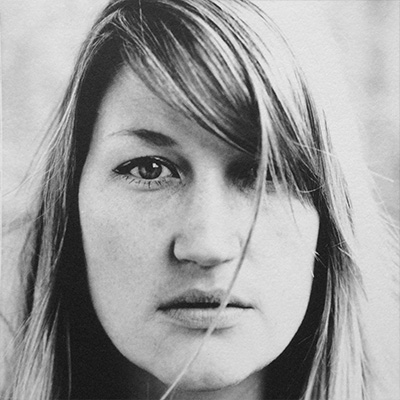
Julia Gunther
Germany

Julia Gunther
Germany
Julia Gunther is a German photo artist who specialises in documentary projects. Her work explores themes of representation, gender, visual identity and social activism, specifically, the role of women in society.
Her photography has been exhibited in New York, London, Cape Town, South Korea, Sydney, Amsterdam and selected by exhibitions and festivals around the globe. Julia's work was selected for the Month of Photography Los Angeles, the Taylor Wessing Photographic Portrait Prize Exhibition and has won awards at the Wellcome Photography Prize, The New York Photo Festival and the Moscow International Foto Awards.
Julia’s work has also been featured in international publications such as the New York Times Magazine, NPR, The Independent, The Guardian, Dazed, WIRED and Al Jazeera.
The Black Mambas

The Black Mambas are an all female anti-poaching unit who operate in Balule Nature Reserve, near Kruger National Park, in north-eastern South Africa. They are trained in anti-poaching, survival skills, identification and tracking of humans and animals, how to blend in with their surroundings and how to avoid confrontations. Their training is crucial as the animals they track are wild, and poachers shoot to kill. Their anti-poaching strategy includes ‘visual policing’ through daily boundary patrols which are conducted on foot during first light and by vehicle at last light, manning observation and listening posts stationed in critical areas such as known entry and exit points of poachers, and monitoring popular waterholes for signs of poisoning. The Black Mambas also live in a series of compounds inside the reserve, which affords them a constant presence in the park. Awarded with the UN’s top environmental award, Champions of the Earth, the Black Mambas act as role models in their own communities (where many of the poachers live). As women and mothers, they command a form of respect that the heavily armed, mostly male, anti-poaching units do not.
The Black Mambas
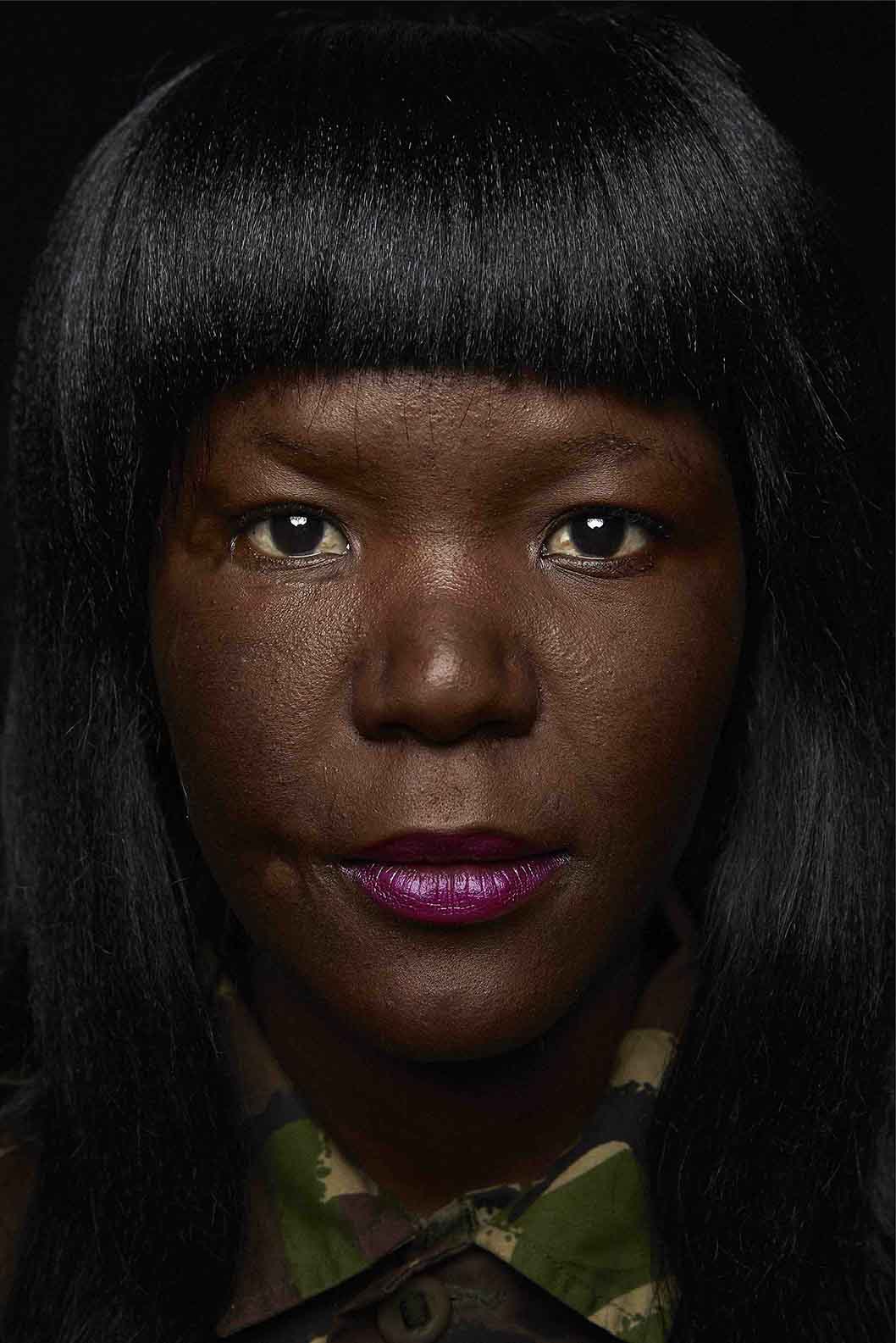
The Black Mambas are an all female anti-poaching unit who operate in Balule Nature Reserve, near Kruger National Park, in north-eastern South Africa. They are trained in anti-poaching, survival skills, identification and tracking of humans and animals, how to blend in with their surroundings and how to avoid confrontations. Their training is crucial as the animals they track are wild, and poachers shoot to kill. Their anti-poaching strategy includes ‘visual policing’ through daily boundary patrols which are conducted on foot during first light and by vehicle at last light, manning observation and listening posts stationed in critical areas such as known entry and exit points of poachers, and monitoring popular waterholes for signs of poisoning. The Black Mambas also live in a series of compounds inside the reserve, which affords them a constant presence in the park. Awarded with the UN’s top environmental award, Champions of the Earth, the Black Mambas act as role models in their own communities (where many of the poachers live). As women and mothers, they command a form of respect that the heavily armed, mostly male, anti-poaching units do not.
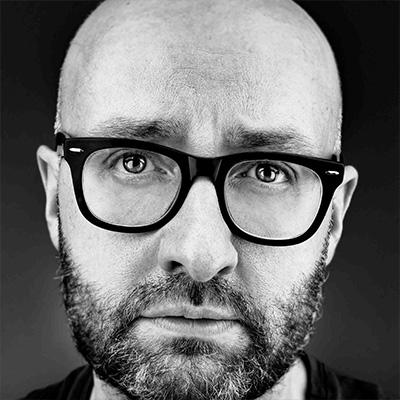
Marco Giannattasio
Italy

Marco Giannattasio
Italy
Marco Giannattasio is an Italian photographer with a postgraduate degree in Philosophy. After a career of teaching and collaborating with foreign universities, he began working professionally as a commercial photographer.
Giannattasio’s interests lie in the ability for the medium of documentary photography to narrate stories which interest him, and therefore commits as much time as he can to the documentary format.
Dhaka’s invisible slaves
A roof in exchange for a life

Driven by the impossibility of taking care of their own children, Bangladesh’s poorest families are the first link in an invisible chain of slavery that ties children to unscrupulous masters and denies them their fundamental rights. In exchange for board and lodging, they leave the shanty towns and narrow dirt tracks to work in grey buildings as “domestic helpers”, without pay, without fixed working hours, without any type of privacy, but worst of all, without any way out. Isolated from the rest of the world and denied any possibility of an education, for society they do not exist. Very often they are children from the metropolitan area of Dhaka, the country’s capital. They grow up cleaning bathrooms, scraping ovens, tidying, living in fear of being raped from one moment to the next, or being victimized by the children of well-off families. For these children, the outside world is a slit of light from beyond the window shutters or the spaces between the bars.
Dhaka’s invisible slaves
A roof in exchange for a life

Driven by the impossibility of taking care of their own children, Bangladesh’s poorest families are the first link in an invisible chain of slavery that ties children to unscrupulous masters and denies them their fundamental rights. In exchange for board and lodging, they leave the shanty towns and narrow dirt tracks to work in grey buildings as “domestic helpers”, without pay, without fixed working hours, without any type of privacy, but worst of all, without any way out. Isolated from the rest of the world and denied any possibility of an education, for society they do not exist. Very often they are children from the metropolitan area of Dhaka, the country’s capital. They grow up cleaning bathrooms, scraping ovens, tidying, living in fear of being raped from one moment to the next, or being victimized by the children of well-off families. For these children, the outside world is a slit of light from beyond the window shutters or the spaces between the bars.

Maxime Matthys
Belgium

Maxime Matthys
Belgium
Maxime Matthys (1995) is a Belgian visual artist working and living between Rennes and Paris. He is developing an artistic practice using mainly photography, performance, videography and installation.
His work focuses on the ways in which technologies are affecting our daily lives and shifting our perception of reality. While exploring new narrative forms, Matthys continues to document the important issues that are shaping our future.
He has received numerous awards and his work has been exhibited in France, Canada, Lithuania, Poland, Malaysia, Korea, United Kingdom, Indonesia, Spain.
His work has been published in various magazines and newspapers including, Le Monde, Libération, Fisheye Magazine, Polka Magazine, Médiapart, ArtInfo.
2091 : THE MINISTRY OF PRIVACY

For the past 2 years, China has been conducting a massive crackdown against Muslim-minority communities, specifically Uyghurs and Kazakhs in its vast western Xinjiang region. Some of the most advanced surveillance technologies are being massively deployed in the region as a means to monitor every aspect of the inhabitant’s life. These surveillance technologies (including street cameras armed with facial recognition software) destroy any hope of privacy for the citizens of China. The series 2091: The Ministry of Privacy works to explore the mechanism of facial recognition technologies used by the Chinese government to monitor and oppress the inhabitants of the Xinjiang region. To do so, I worked with a French IT engineer, William Attache, who helped me develop and install facial recognition software on my computer. The software that was developed for this project is akin to the ones used by the Chinese government to track its inhabitants. I travelled to Kachgar, one of the last bastions of Uyghur culture in Xinjiang where I photographed the daily life of the inhabitants. Once in my hotel room, I uploaded the pictures to the facial recognition software and waited for the operating systems to recognize the facial information of the people appearing in my photographs. The software then drew the respective biometric facial informations directly on the faces of the people appearing on the photographs, allowing us to finally see facial recognition. Through this creative process, The ministry of Privacy reveals the intrusiveness and the dangerousness of this invisible technology, while documenting and paying tribute to the last remains of these communities’ vibrant culture, before its planned disappearance. It is translating a virtual technology into a real, visible, and frightening tool we can look at. In this new documentary approach, the final photographs are blurring the borders between reality and the virtual.
2091 : THE MINISTRY OF PRIVACY
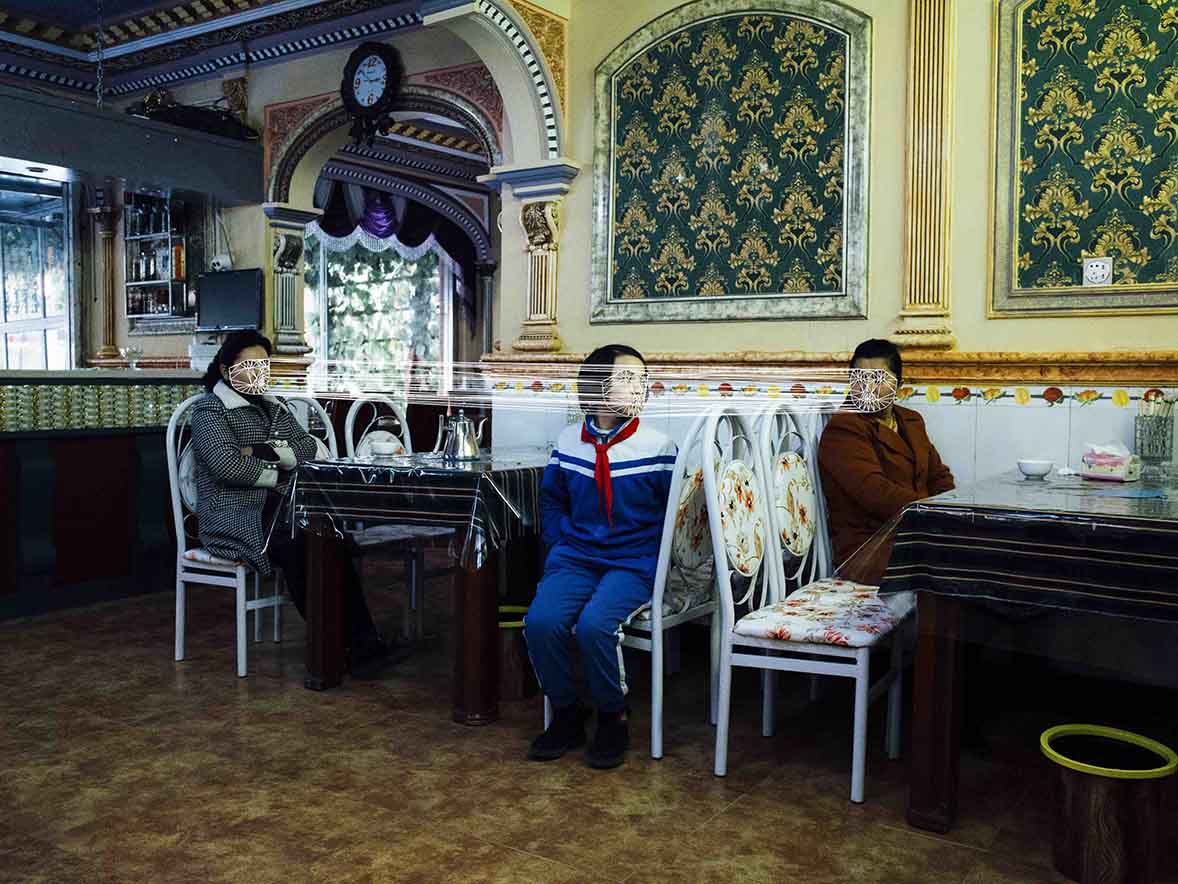
For the past 2 years, China has been conducting a massive crackdown against Muslim-minority communities, specifically Uyghurs and Kazakhs in its vast western Xinjiang region. Some of the most advanced surveillance technologies are being massively deployed in the region as a means to monitor every aspect of the inhabitant’s life. These surveillance technologies (including street cameras armed with facial recognition software) destroy any hope of privacy for the citizens of China. The series 2091: The Ministry of Privacy works to explore the mechanism of facial recognition technologies used by the Chinese government to monitor and oppress the inhabitants of the Xinjiang region. To do so, I worked with a French IT engineer, William Attache, who helped me develop and install facial recognition software on my computer. The software that was developed for this project is akin to the ones used by the Chinese government to track its inhabitants. I travelled to Kachgar, one of the last bastions of Uyghur culture in Xinjiang where I photographed the daily life of the inhabitants. Once in my hotel room, I uploaded the pictures to the facial recognition software and waited for the operating systems to recognize the facial information of the people appearing in my photographs. The software then drew the respective biometric facial informations directly on the faces of the people appearing on the photographs, allowing us to finally see facial recognition. Through this creative process, The ministry of Privacy reveals the intrusiveness and the dangerousness of this invisible technology, while documenting and paying tribute to the last remains of these communities’ vibrant culture, before its planned disappearance. It is translating a virtual technology into a real, visible, and frightening tool we can look at. In this new documentary approach, the final photographs are blurring the borders between reality and the virtual.

Miranda Schmitz
Belgium

Miranda Schmitz
Belgium
Miranda Schmitz (1969) is an award winning photographer and visual storyteller from Belgium. She studied Economics and Psychology and works as an independent consultant in Finance and Human Resources.
In June 2017 she graduated at the Academy of Fine Arts in Lier, and attended several master classes led by well-known photographers Michael Ackerman and Klavdij Sluban.
The enigmatic and cinematic portraits from her graduate exhibition have received global praise with several awards and nominations.
While her series Black Waves is also frequently exhibited in galleries and photo festivals globally, in Bruges, Sydney, New York, San Francisco, Lishui and Kuala Lumpur among others.
Miranda Schmitz is interested in dark and psychological issues, life changes and a mix of vulnerability and strength. She strives to compile atmospheres, moods and feelings which result in suggestive, layered and ambiguous images.
IN BETWEEN

'IN BETWEEN’ is not necessarily an examination into the specific traits of Gen Z, but rather an honest and timeless musing about coming of age. Since I don’t have children of my own but do possess a certain curiosity about the current generation of teenagers, I used my camera as a looking glass through which to observe their world. In this project I aimed to delve deeper than the individuality of the people and try and capture the essence of puberty as a developmental phase of life. I photographed Belgian youths between the ages of 13 and 15. They are the sons and daughters of friends and colleagues. Because the images have been stripped of all context, the kids can only communicate with their bodies and show themselves and their personality through their look and posture.
IN BETWEEN

'IN BETWEEN’ is not necessarily an examination into the specific traits of Gen Z, but rather an honest and timeless musing about coming of age. Since I don’t have children of my own but do possess a certain curiosity about the current generation of teenagers, I used my camera as a looking glass through which to observe their world. In this project I aimed to delve deeper than the individuality of the people and try and capture the essence of puberty as a developmental phase of life. I photographed Belgian youths between the ages of 13 and 15. They are the sons and daughters of friends and colleagues. Because the images have been stripped of all context, the kids can only communicate with their bodies and show themselves and their personality through their look and posture.

Schore Mehrdju
Germany

Schore Mehrdju
Germany
Schore Mehrdju is a German-Iranian portrait and documentary photographer, currently living and working in Berlin. She holds a Law degree and graduated from the Ostkreuz School of Photography.
Her parents fled Iran, where she was born, after the Islamic revolution. She grew up in Germany, which she now calls home. Her work comprises photographs, archive documents and interviews and explores deeply personal life stories.
The Second

The Second (2018-2019) is a series that explores women’s social status in Tajikistan. “A woman without a husband is worthless here!” – Mehrdju heard this statement regularly from the very women she photographed. To be respected by society, Tajik women must be married, whether as a first or second wife. This is the main reason why the concept of polygamy has become widespread in Tajik society, even though it is punished by law. The Muslim marriage contract, or Nikoh, allows polygamous marriages under certain conditions, but leaves second wives and their children without any rights. It is for this reason that Mehrdju has worked in collaboration with these women to create anonymous portraits away from any stigmatization.
The Second
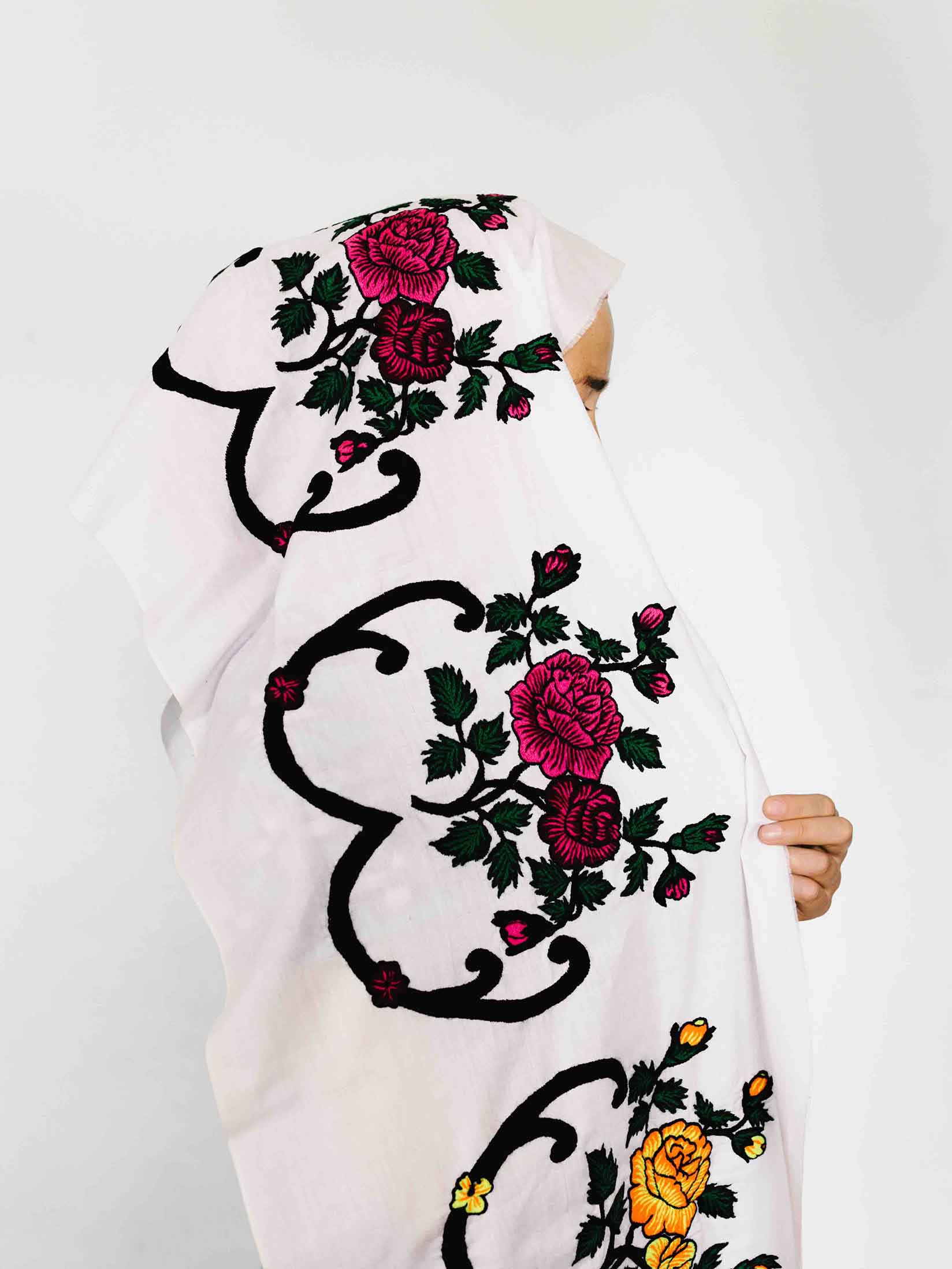
The Second (2018-2019) is a series that explores women’s social status in Tajikistan. “A woman without a husband is worthless here!” – Mehrdju heard this statement regularly from the very women she photographed. To be respected by society, Tajik women must be married, whether as a first or second wife. This is the main reason why the concept of polygamy has become widespread in Tajik society, even though it is punished by law. The Muslim marriage contract, or Nikoh, allows polygamous marriages under certain conditions, but leaves second wives and their children without any rights. It is for this reason that Mehrdju has worked in collaboration with these women to create anonymous portraits away from any stigmatization.
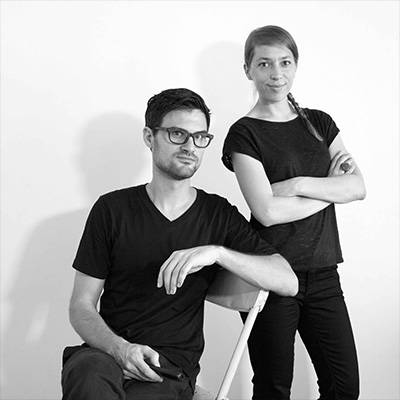
Stéphanie Borcard and Nicolas Métraux
Switzerland

Stéphanie Borcard and Nicolas Métraux
Switzerland
Stéphanie Borcard and Nicolas Métraux are a Swiss duo of photographers. They live and work in Switzerland after being based in Bangkok, Thailand, for over three years. They regularly collaborate with the press, as well as with institutions such as the Swiss National Science Foundation (SNSF). Their personal projects explore social issues, both universal and specific. But it is the notion of identity, the relationship that binds the individual to society, which is found throughout their work whether captured in Bosnia-Herzegovina, the Philippines, China or Switzerland. They are constantly questioning themselves, fueled by the insatiable desire for a better understanding of the world.
Stephanie Borcard and Nicolas Métraux have been exhibited in Europe and Asia and have won the 1st Prize of the Swiss Press Photo (2015) with their series on Alzheimers entitled Fading Memories, and INSTITUTE artists agency.
In 2015, GOST Books published their first monograph Grey Skies Black Birds with texts by Saša Stanišić, Srećko Latal and Christian Caujolle. Grey Skies Black Birds is part of the permanent collection of the Fotostiftung in Winterthur.
TIBETAN WILD WEST

Tagong (塔公) is located in western Sichuan province in South-Western China. We were surprised how much the sight of Tibetan men and women, on their horses, with their large hats, whips and boots seemed to belong to some collective memory of The Wild West. We started imagining this series as an attempt to blend our Tibetan road trip with the concept of the Far West. In Serxu, at the northernmost tip of Sichuan province, we finally found the Tibetan version of Billy the Kid proudly showing off his AK47, which was used for the start of a horse race. Historians and linguists have compared the Sino-Tibetan languages and religion with Native American ones. American historian Ethel Stewart wrote a controversial book about The Dene and Na-Dene Indian Migration 1233 A.D.: Escape from Genghis Khan to America in which she suggested that the languages and religions of the Na-Dene, one of the largest Native American families, arrived to the New World after the destruction of their kingdom (Xi-Xia Kingdom) by Genghis Khan in 1227 A.D. Other contested theories that show links and similarities of both cultures have been developed by Edward Sapir (1884–1939) who was an American anthropologist and linguist. The Tibetan and Native American love of turquoise jewelry seems to connect the two cultures as well. “In the incongruous atmosphere of the Wilshire Hotel in Los Angeles, an extraordinary encounter took place in 1979. During the Dalai Lama’s first visit to North America, he met with three Hopi elders. The spiritual leaders agreed to speak only in their Native tongues. Through Hopi elder and interpreter Thomas Benyakya, delegation head Grandfather David’s first words to the Dalai Lama were: “Welcome home.” The Dalai Lama laughed, noting the striking resemblance of the turquoise around Grandfather David’s neck to that of his homeland. He replied: “And where did you get your turquoise?” - by Antonio Lopez
TIBETAN WILD WEST

Tagong (塔公) is located in western Sichuan province in South-Western China. We were surprised how much the sight of Tibetan men and women, on their horses, with their large hats, whips and boots seemed to belong to some collective memory of The Wild West. We started imagining this series as an attempt to blend our Tibetan road trip with the concept of the Far West. In Serxu, at the northernmost tip of Sichuan province, we finally found the Tibetan version of Billy the Kid proudly showing off his AK47, which was used for the start of a horse race. Historians and linguists have compared the Sino-Tibetan languages and religion with Native American ones. American historian Ethel Stewart wrote a controversial book about The Dene and Na-Dene Indian Migration 1233 A.D.: Escape from Genghis Khan to America in which she suggested that the languages and religions of the Na-Dene, one of the largest Native American families, arrived to the New World after the destruction of their kingdom (Xi-Xia Kingdom) by Genghis Khan in 1227 A.D. Other contested theories that show links and similarities of both cultures have been developed by Edward Sapir (1884–1939) who was an American anthropologist and linguist. The Tibetan and Native American love of turquoise jewelry seems to connect the two cultures as well. “In the incongruous atmosphere of the Wilshire Hotel in Los Angeles, an extraordinary encounter took place in 1979. During the Dalai Lama’s first visit to North America, he met with three Hopi elders. The spiritual leaders agreed to speak only in their Native tongues. Through Hopi elder and interpreter Thomas Benyakya, delegation head Grandfather David’s first words to the Dalai Lama were: “Welcome home.” The Dalai Lama laughed, noting the striking resemblance of the turquoise around Grandfather David’s neck to that of his homeland. He replied: “And where did you get your turquoise?” - by Antonio Lopez
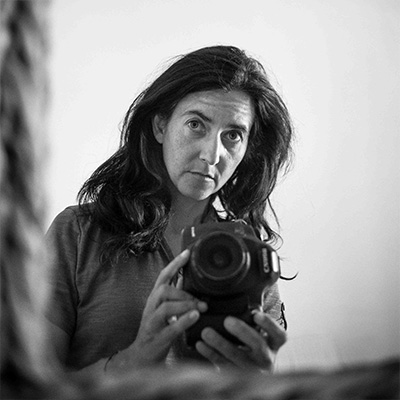
Susana Giron
Spain

Susana Giron
Spain
Susana Giron is a freelance documentary photographer based in Spain. She has graduated in Photography and Visual Arts at the University Miguel Hernandez in Elche, and has worked as a professional photojournalist since 2009. Her images assiduously illustrate a broad range of international media such as New York Times, CNN, Stern, GEO France, Days Japan, Terra Mater, El Mundo, Polka, El País, La Nacion, Der Spiegel,...
She is looking for stories out of the focus of the news, linked to cultural roots and human rights, approaching them from a deep perspective and patience.
She has received several awards including the Fototraballo international Grant (2012), National Photojournalism Award Doñana (2013), Third prize at China International Press Photo Award 2014, Felix Ordoñez Sport Photography Award (2016, 2017), Felix de Azara International Photography Award (2016), Propuestas Grant supported by VEGAP, Siena International Photography awards (2019), IMAGENERA honourable prize from the Andalusian Government (2019), and a second prize at International Photography Grant (2019), among others.
Giron’s most recent project, entitled 90 varas’ or Zug der schafe in German, was published in a photobook by Terramater books (Red Bull Media House, 2019), other publications which feature her work ionclude Legados (2010), and Fe, pasión y destino (2012).
Her work has been widely exhibited in festivals and institutions around the world, including London Business School (2019), Zoom Photofestival Saguenay (2018), Encontros da Imagem (2009, 2014), Backlight Photofestival (2011), and Fotoencuentros (2010).
90 varas (90 shepherd canes)

This story begins in the year 1273. 90 shepherd canes were used as the measurement for the width of the Cañadas Reales for traditional use, and the transit of transhumant herds in Spain, the measurement was regulated by royal edict of the Monarch Alfonso X El Sabio. To preserve its regulation, he ordered the creation of the Honourable Council of the Mesta, the first grouping of cattle ranchers in Spain and Europe, with the objective of protecting the roads for the transit of livestock and the livestock trade. In its heyday, in the mid-eighteenth century, 3,750,000 head of cattle passed annually through the canyons and royal trails. Today, there are only 150 transhumant families left and an approximate number of 150,000 head of cattle migrating along these roads full of history.
90 varas (90 shepherd canes)

This story begins in the year 1273. 90 shepherd canes were used as the measurement for the width of the Cañadas Reales for traditional use, and the transit of transhumant herds in Spain, the measurement was regulated by royal edict of the Monarch Alfonso X El Sabio. To preserve its regulation, he ordered the creation of the Honourable Council of the Mesta, the first grouping of cattle ranchers in Spain and Europe, with the objective of protecting the roads for the transit of livestock and the livestock trade. In its heyday, in the mid-eighteenth century, 3,750,000 head of cattle passed annually through the canyons and royal trails. Today, there are only 150 transhumant families left and an approximate number of 150,000 head of cattle migrating along these roads full of history.

Tytus Grodzicki
Poland

Tytus Grodzicki
Poland
Tytus Grodzicki is a documentary, travel, and street photographer. He was born in Poznan, Poland in 1972, where he earned a Masters degree in Economics at the Poznan University of Economics in 1995. He currently runs his own business in the field of construction consultancy.
Grodzicki currently lives and works in Poznan, Poland, where he is a member of Polish Association of Artist Photographers
His publications include: DEBUTS Book (2016), Magazyn Pokochaj Fotografie No.17 (2014), Leica Fotografie International (LFI Magazine) No.6 (2013), DOC! Photo Magazine No.14
LFI Master Shots Gallery.
His work has been showcased in solo and group exhibitions including Deglet Nour (2019, 2020, Poland), The Starting Point (2014) and Man and Constructions (2014), as well as in venues and events such as Wielkopolska Press Photo (2016, 2019), WBPiCAK (2015, 2016, 2017), Spichlerz Sztuki / Granary of Art (2014).
He is also the recipient of many awards and nominations that include an honourable mention essay at Wielkopolska Press Photo (2019), a finalist position at the MAGHREB PHOTOGRAPHY AWARDS (2019), a laureate jury president award at Wielkopolska Press Photo (2017), he was a laureate at DEBUTS (2016), and received an honourable mention essay at Press Photo (2015).
Deglet Nour

Deglet Nour Algeria remains mainly undiscovered. This makes it valuable and mythical at the same time, like a philosopher’s stone. It is an elusive muse for its children and for foreigners alike. Nobody can resist its charm. You can reach it only if you are humble enough. If you look down on it, you will lose sight of it. You will only see your own hubris. Yasmina Khadra, excerpt from opening essay to Deglet Nour book. When Tytus Grodzicki first visited Algeria, he was a teenage boy. He only spent a year there, but the memories of that time stayed with him to his adult life. The photos came a bit later. He came back to Algeria to revisit familiar places and meet people who were close to him, but also to look at the country through a documentarist's eye. Deglet Nour is the name of a type of dates which is considered the most perfect, and literally means 'the finger of light'. This light is a guide for the photographer, and leads the viewer through the photographs. It's also an instrumental part of the story of a country most of us know nothing about. It's everyday life, without unnecessary glamour or turbulent, absorbing events. The author is close, shoots a bit lower than most, staying mostly hidden to his objects. His muses are often nameless: boys playing football, men sharing a hug, shoppers bargaining and chatting in the market, a couple just enjoying some time together, or women, whose portrayals aren't at all stereotypical. Tytus Grodzicki doesn't look down on Algeria. His observations of it are familiar landscapes, known situations. He patiently, quietly follows the contemporary world, giving his audience a taste of Algeria that has not quite yet been uncovered.
Deglet Nour

Deglet Nour Algeria remains mainly undiscovered. This makes it valuable and mythical at the same time, like a philosopher’s stone. It is an elusive muse for its children and for foreigners alike. Nobody can resist its charm. You can reach it only if you are humble enough. If you look down on it, you will lose sight of it. You will only see your own hubris. Yasmina Khadra, excerpt from opening essay to Deglet Nour book. When Tytus Grodzicki first visited Algeria, he was a teenage boy. He only spent a year there, but the memories of that time stayed with him to his adult life. The photos came a bit later. He came back to Algeria to revisit familiar places and meet people who were close to him, but also to look at the country through a documentarist's eye. Deglet Nour is the name of a type of dates which is considered the most perfect, and literally means 'the finger of light'. This light is a guide for the photographer, and leads the viewer through the photographs. It's also an instrumental part of the story of a country most of us know nothing about. It's everyday life, without unnecessary glamour or turbulent, absorbing events. The author is close, shoots a bit lower than most, staying mostly hidden to his objects. His muses are often nameless: boys playing football, men sharing a hug, shoppers bargaining and chatting in the market, a couple just enjoying some time together, or women, whose portrayals aren't at all stereotypical. Tytus Grodzicki doesn't look down on Algeria. His observations of it are familiar landscapes, known situations. He patiently, quietly follows the contemporary world, giving his audience a taste of Algeria that has not quite yet been uncovered.
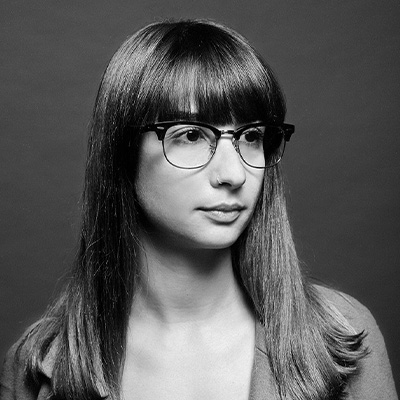
Valeria Cherchi
Italy

Valeria Cherchi
Italy
Valeria Cherchi (1986) is an Italian photographer currently based in Milan, where she works as an educator and lecturer.
Her work is themed around the meaning of the unspoken, with a particular interest in using images, words and multimedia installations to shed light on unknown stories about social injustices. Cherchi creates multilayered examinations that develop amongst her field research, the use of archives, mixture of visual material, and a log of writings where personal memories, sociological, anthropological and scientific observations mingle.
Her first photo-text book Some of You Killed Luisa was nominated for the Deutsche Börse Photography Prize, and won the Premio Marco Bastianelli for the best Italian photo book published in 2020. It attempts to decode the complex structure of the phenomenon of kidnapping that became widespread across Sardinia, Italy from the 1960’s and the 1990’s. In her latest work, Attesa, she focuses on the topic of obstetric violence, exploring themes such as gender and mourning with a systemic perspective.
In 2018 she was named in the British Journal of Photography’s annual Ones to Watch as one of the sixteen best emerging talents from around the world, in 2019 she was one of the artists selected for Plat(t)form at Fotomuseum Winterthur and nominated for the C/O Berlin Talent Award, 6×6 Global Talent Program, Joop Swart Masterclass and for the Foam Paul Huf Award 2021.
Some of You Killed Luisa (2016-2020)

In Some of You Killed Luisa, Valeria Cherchi (IT) attempts to decode the complex structure of the kidnapping phenomenon that has crossed her homeland, the Italian island of Sardinia. Between the 1960s and the 1990s almost 200 people were kidnapped for ransom. On the 16th of June 1992 the upper part of a human ear is found by a priest on a mountainous road in Barbagia, central Sardinia, while a young boy, Farouk Kassam, is spending his fifth month in a hidden cave. He is held captive by a group of masked strangers. He is only six years old and about the same age as Cherchi. Like most kids, she was also terrified of being taken away from her home. Eleven years later, Luisa Manfredi was shot dead on the balcony of her flat. She was 14 years old and the daughter of Matteo Boe, Farouk’s kidnapper. No-one was ever charged or convicted for her murder, which remains a mystery until this day. How to tell a story bound by uncertainty? How to talk about histories that are just partially ended and shrouded in silence? Cherchi is one of the few artists to deal with this dark chapter of Sardinian history by exploring the parts of the story that appear reliable. After several years of field research, interaction with local communities, digging of media archives and her family’s video tapes she presents a kaleidoscopic story mixing photos, video stills and a log of her research, where memories, sociological and anthropological observations wittily mingle. The outcome of is a multilayered examination that states the importance of Cherchi as a witness of a community bound by the ever-present law of omerta.
Some of You Killed Luisa (2016-2020)
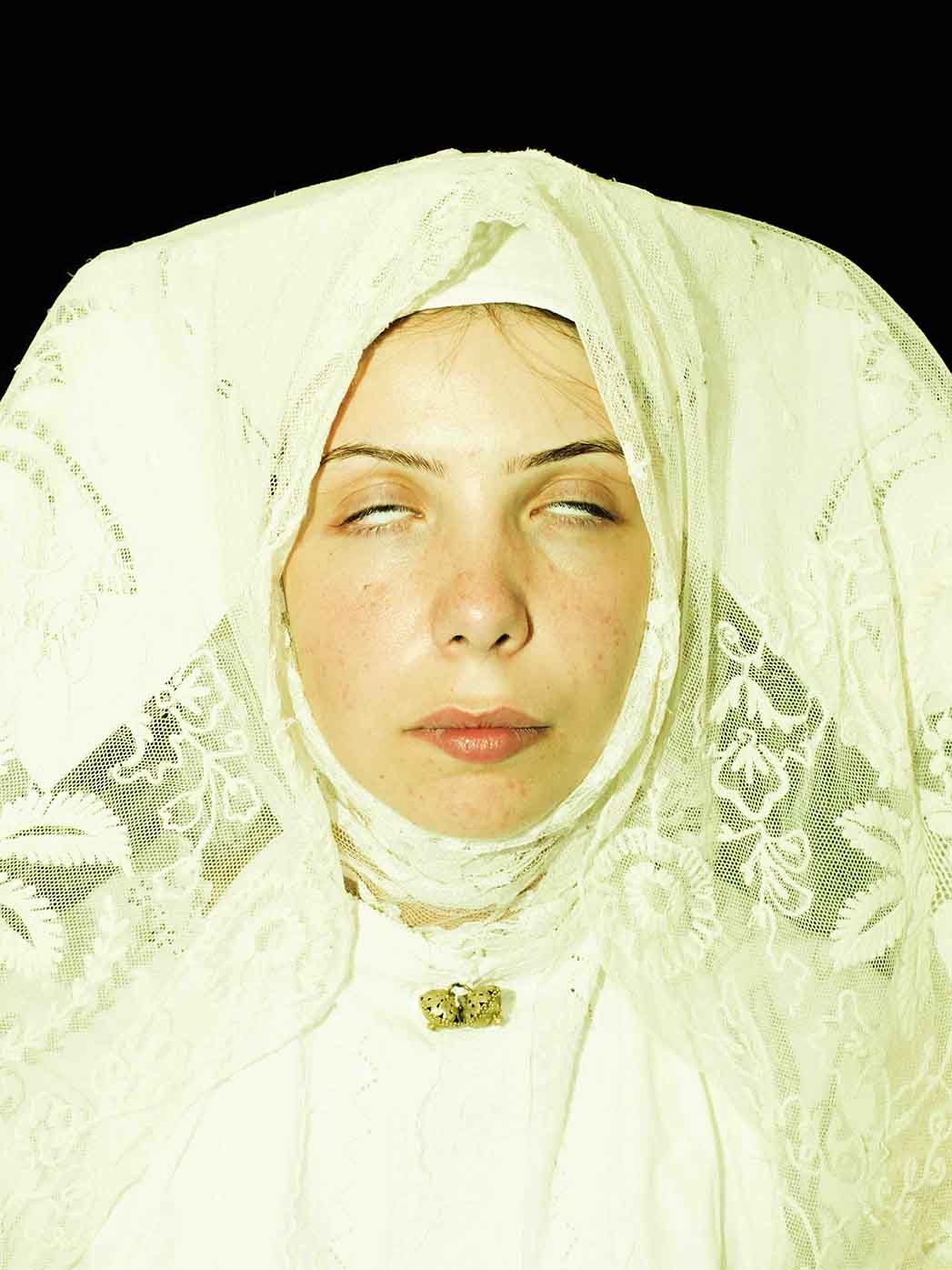
In Some of You Killed Luisa, Valeria Cherchi (IT) attempts to decode the complex structure of the kidnapping phenomenon that has crossed her homeland, the Italian island of Sardinia. Between the 1960s and the 1990s almost 200 people were kidnapped for ransom. On the 16th of June 1992 the upper part of a human ear is found by a priest on a mountainous road in Barbagia, central Sardinia, while a young boy, Farouk Kassam, is spending his fifth month in a hidden cave. He is held captive by a group of masked strangers. He is only six years old and about the same age as Cherchi. Like most kids, she was also terrified of being taken away from her home. Eleven years later, Luisa Manfredi was shot dead on the balcony of her flat. She was 14 years old and the daughter of Matteo Boe, Farouk’s kidnapper. No-one was ever charged or convicted for her murder, which remains a mystery until this day. How to tell a story bound by uncertainty? How to talk about histories that are just partially ended and shrouded in silence? Cherchi is one of the few artists to deal with this dark chapter of Sardinian history by exploring the parts of the story that appear reliable. After several years of field research, interaction with local communities, digging of media archives and her family’s video tapes she presents a kaleidoscopic story mixing photos, video stills and a log of her research, where memories, sociological and anthropological observations wittily mingle. The outcome of is a multilayered examination that states the importance of Cherchi as a witness of a community bound by the ever-present law of omerta.
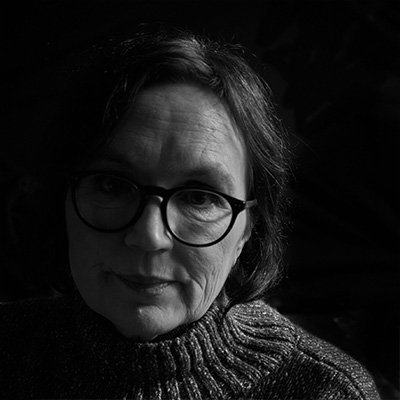
Ilva Beretta
Italy

Ilva Beretta
Italy
Ilva Beretta is a Swedish photographer living in Italy. Her practice most often centres around food both in her work as a fine arts photographer, and as a commercial photographer. She has a Ph.D. in English Renaissance poetry but chose to abandon the written word for the visual image.
Her awards, nominations, and prizes include the SIPA awards (2019), IACP Awards (2019), Px3 Paris Photography Prize (2018), Sony World Photography Awards (2016), International Association of Culinary Professionals in the Digital Media Award (2014).
In 2017 Beretta had a solo exhibition at the Galleria Grefti and participated in the group show Foodographia, both in Italy. In 2016 she participated in the Sony World Photography exhibition and the Pink Lady Food Photography exhibition, both in London. 2013 participated in the EatArt exhibition at the Spazio San Giorgio gallery, Italy.
Natura Mortale
A roof in exchange for a life

According to Amnesty International, torture is practiced in 141 countries, both openly and in secret. Many of these countries have signed the UN convention against torture, but it still goes on. In this series of still lifes, I have worked with the contraposition between the domesticity of the setup of each still lifes and the terrifying traces of violence that are taking place all over the world, be it for political or criminal reasons. I often use food in my work and in this case I use it as a universal point of reference, as a symbol of comfort and nurture that adds another level of conflict between the homely and the terror that grates on our conscience. What appears to be the subject of the still life is in reality only the first layer of the image; when the viewer looks further into it, theywill see instruments used for different methods of torture. The shadows and the darkness are symbolic of the hidden violations of human rights that are taking place in the world every day.
Natura Mortale
A roof in exchange for a life
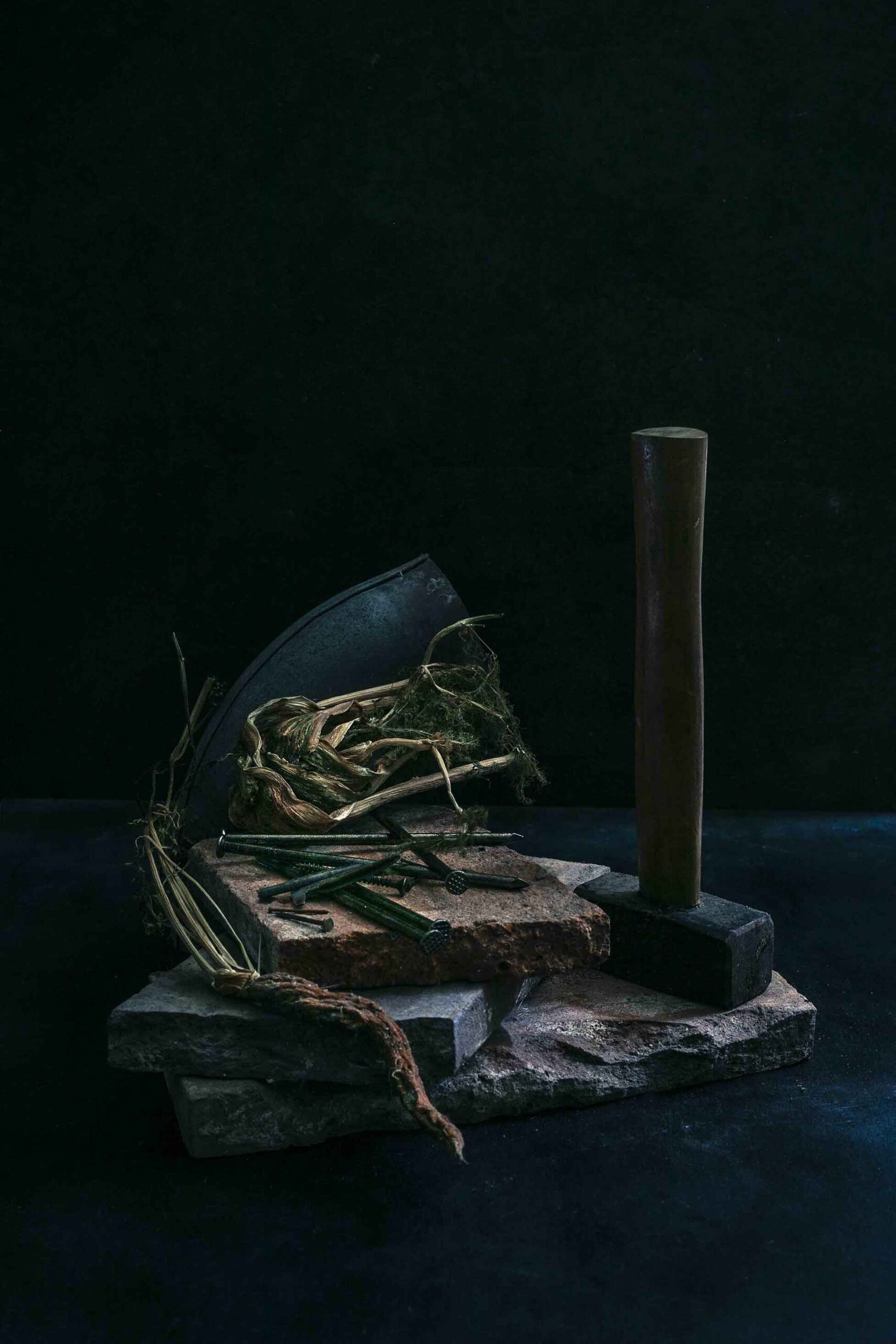
According to Amnesty International, torture is practiced in 141 countries, both openly and in secret. Many of these countries have signed the UN convention against torture, but it still goes on. In this series of still lifes, I have worked with the contraposition between the domesticity of the setup of each still lifes and the terrifying traces of violence that are taking place all over the world, be it for political or criminal reasons. I often use food in my work and in this case I use it as a universal point of reference, as a symbol of comfort and nurture that adds another level of conflict between the homely and the terror that grates on our conscience. What appears to be the subject of the still life is in reality only the first layer of the image; when the viewer looks further into it, theywill see instruments used for different methods of torture. The shadows and the darkness are symbolic of the hidden violations of human rights that are taking place in the world every day.
Our Partners














